
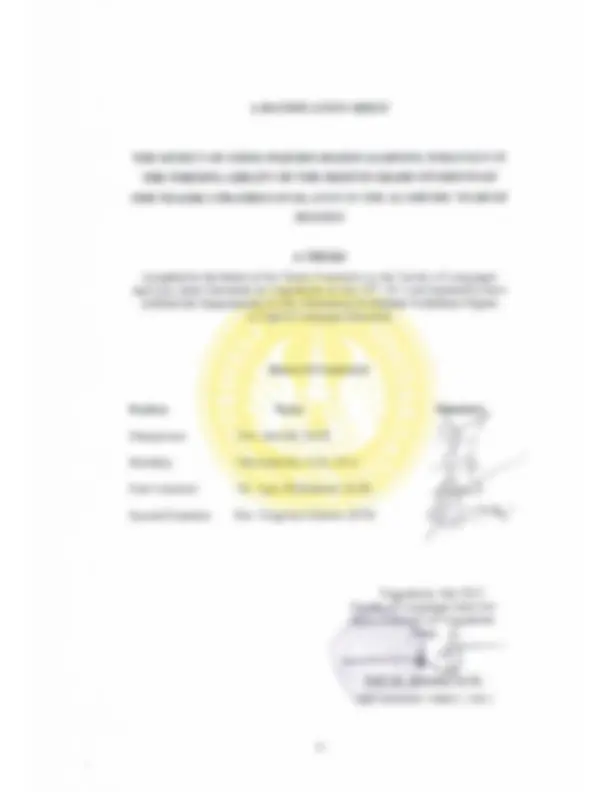
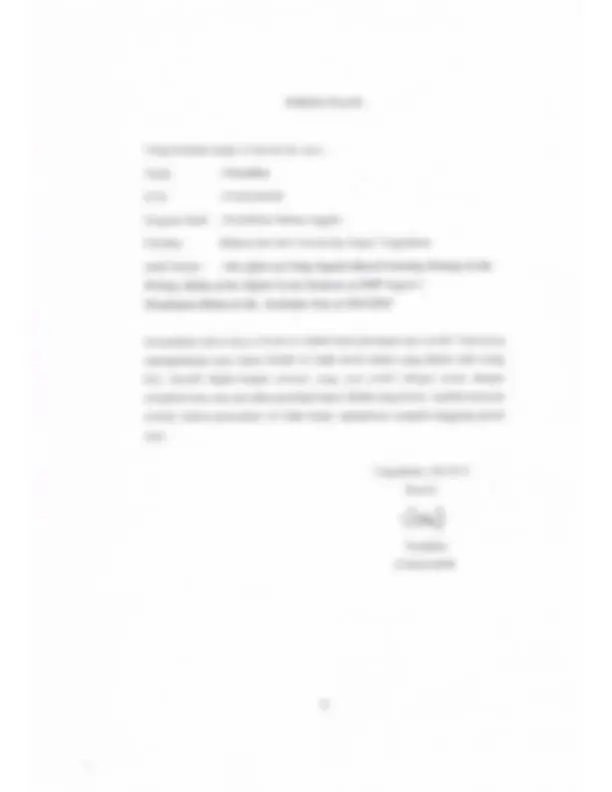
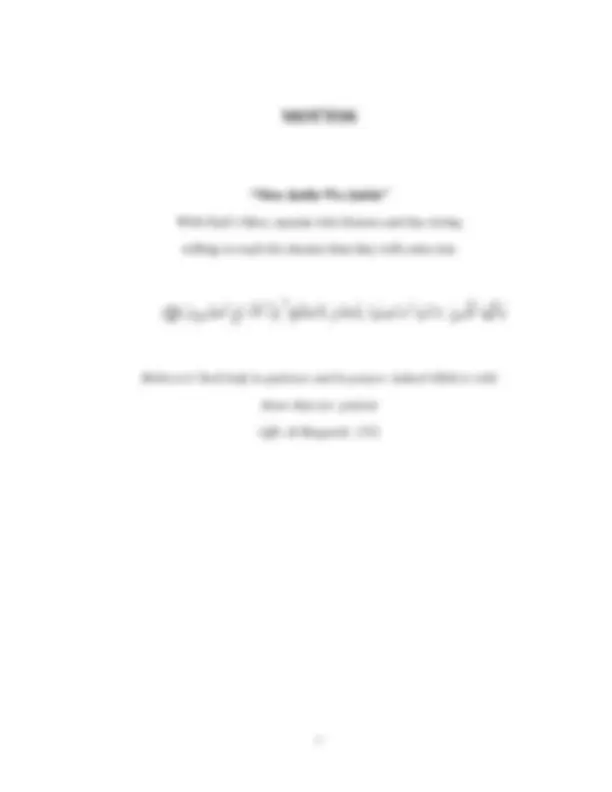

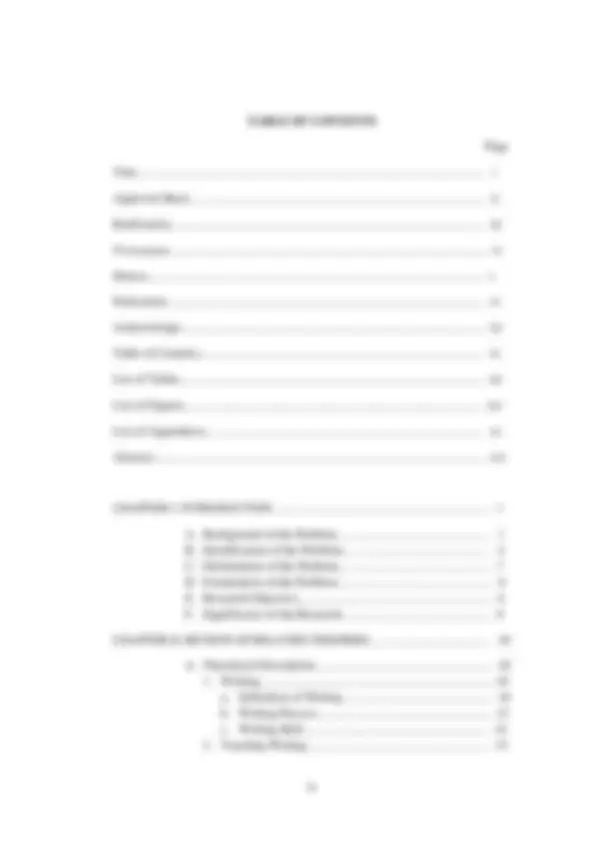
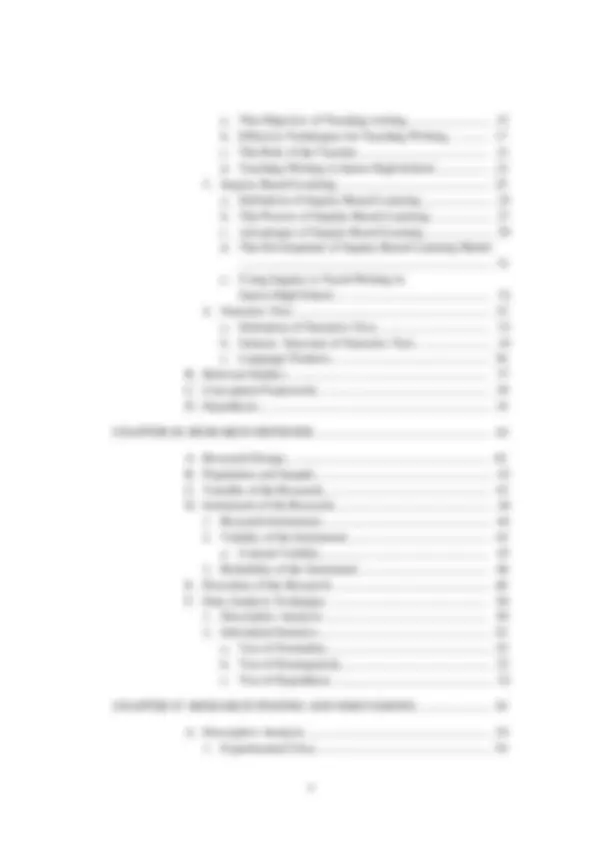
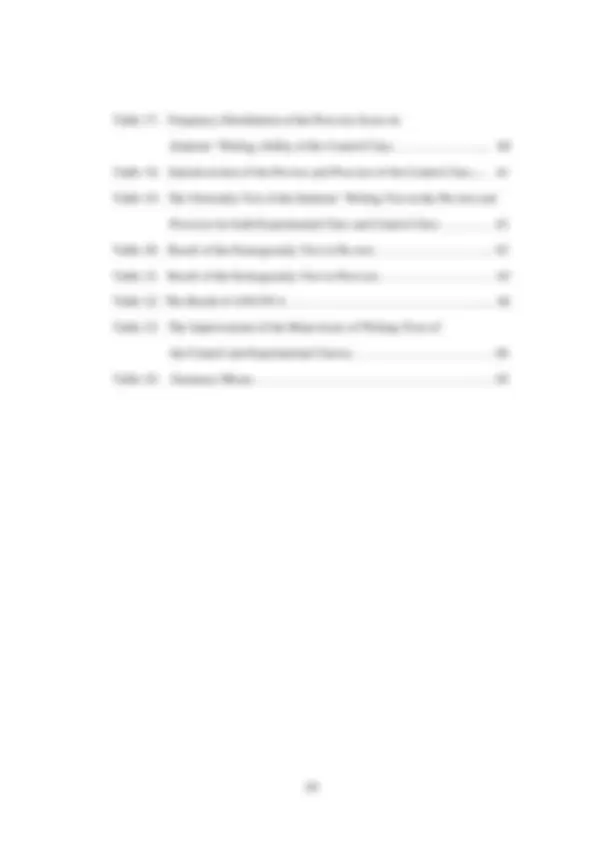
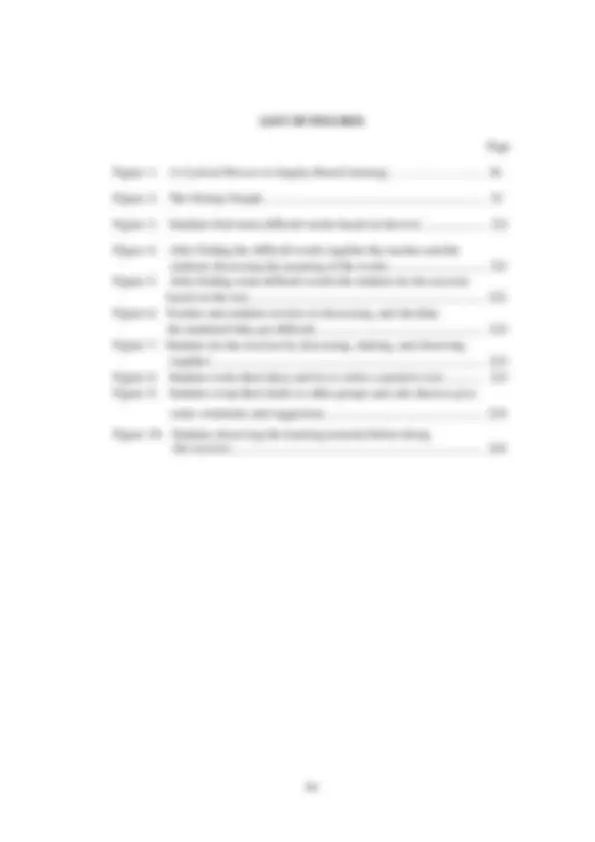
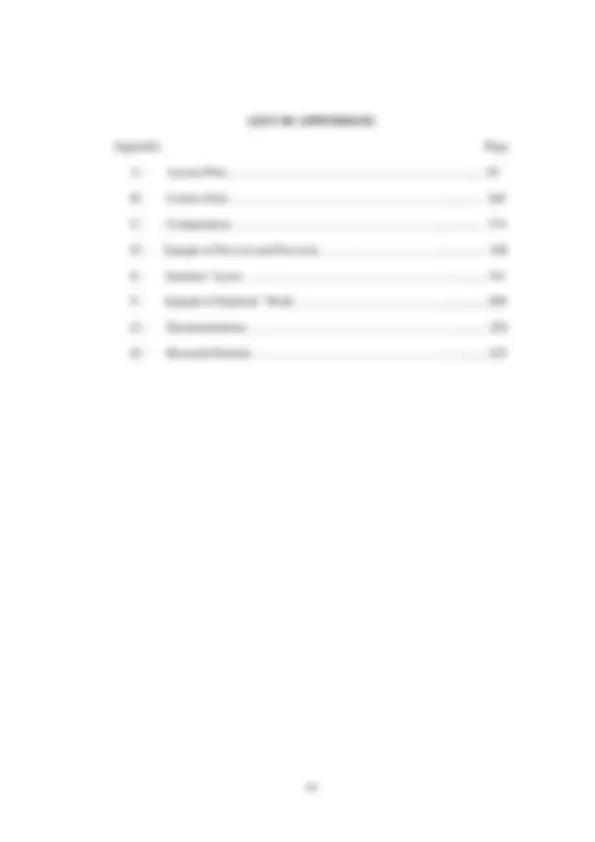
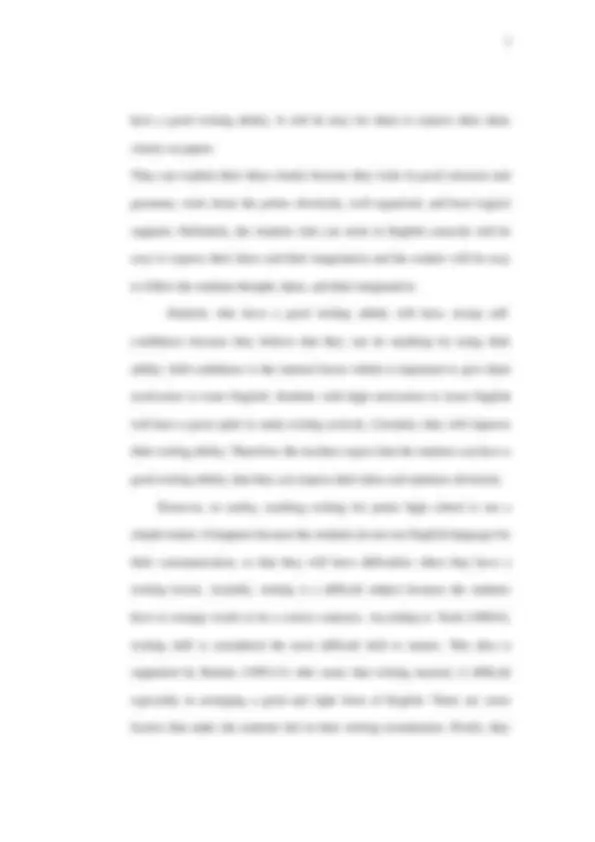
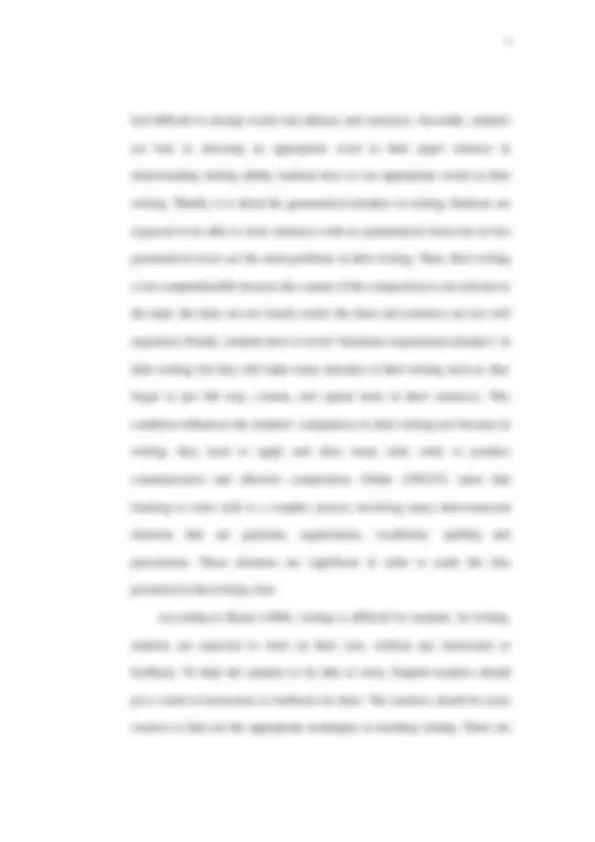
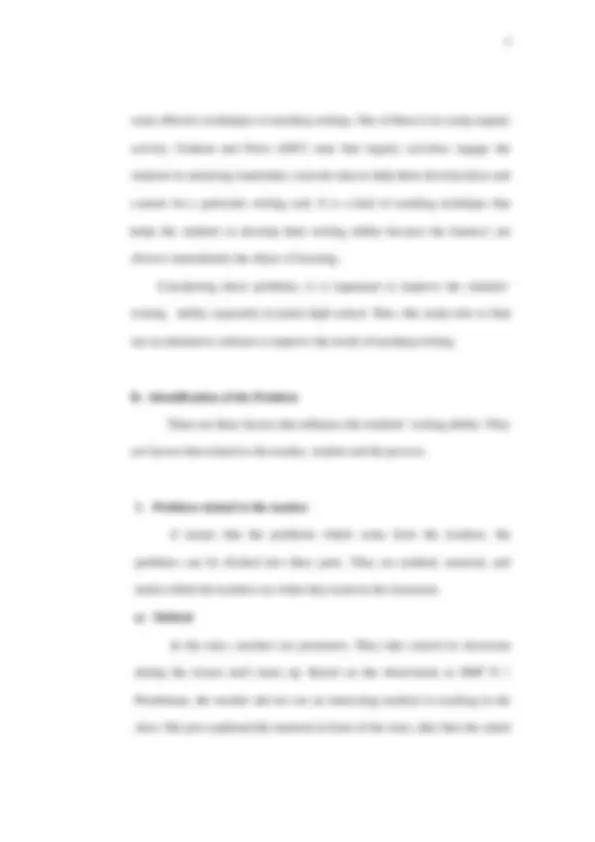
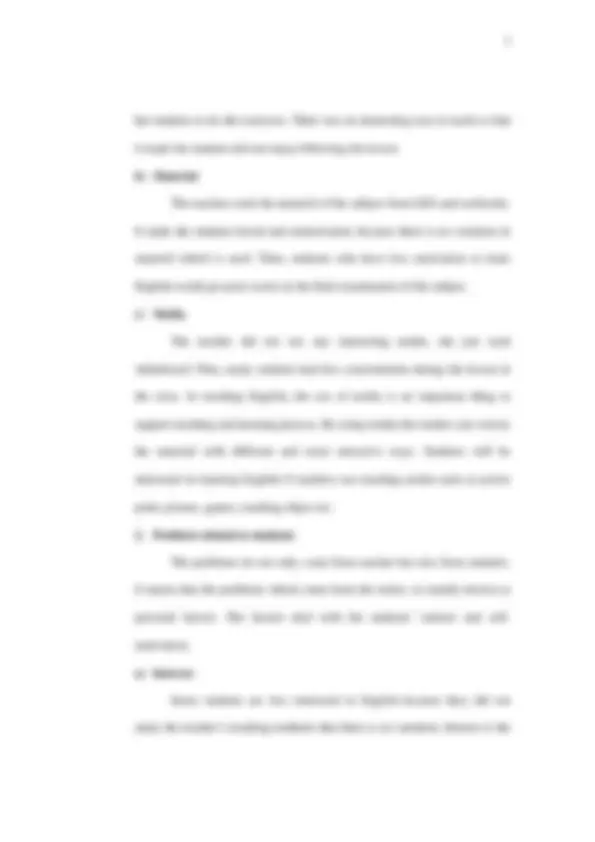
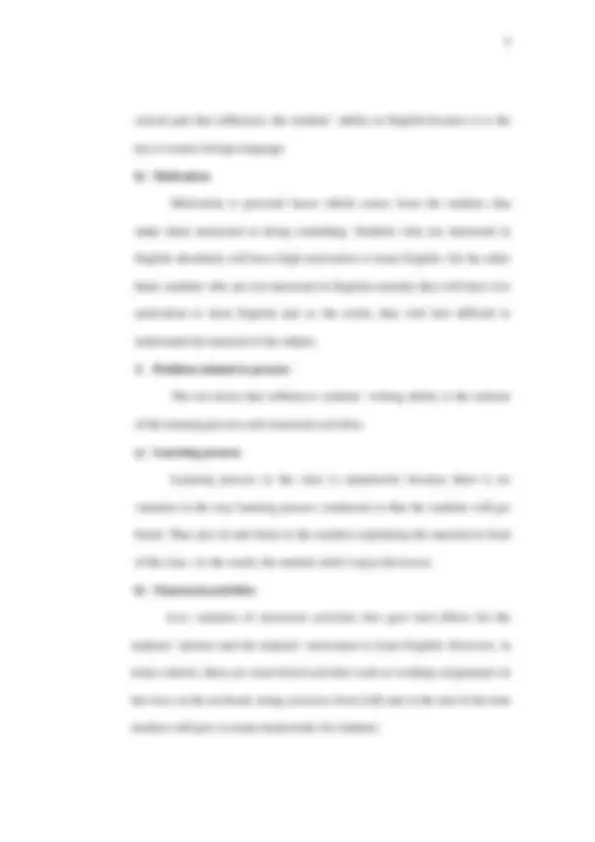
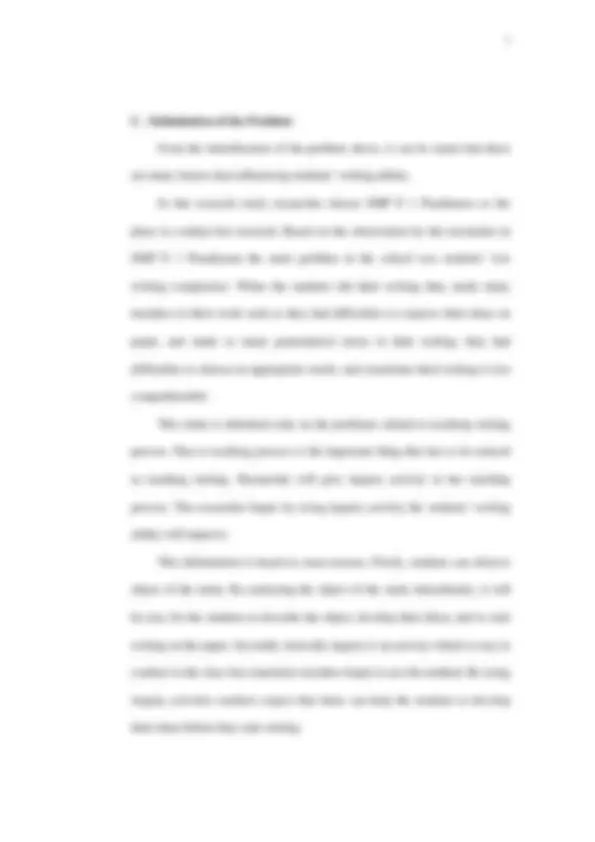
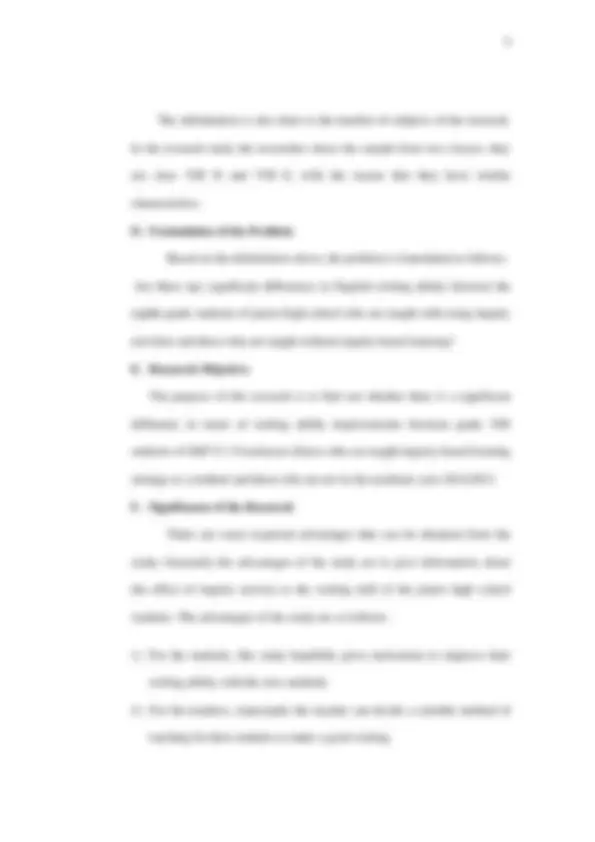

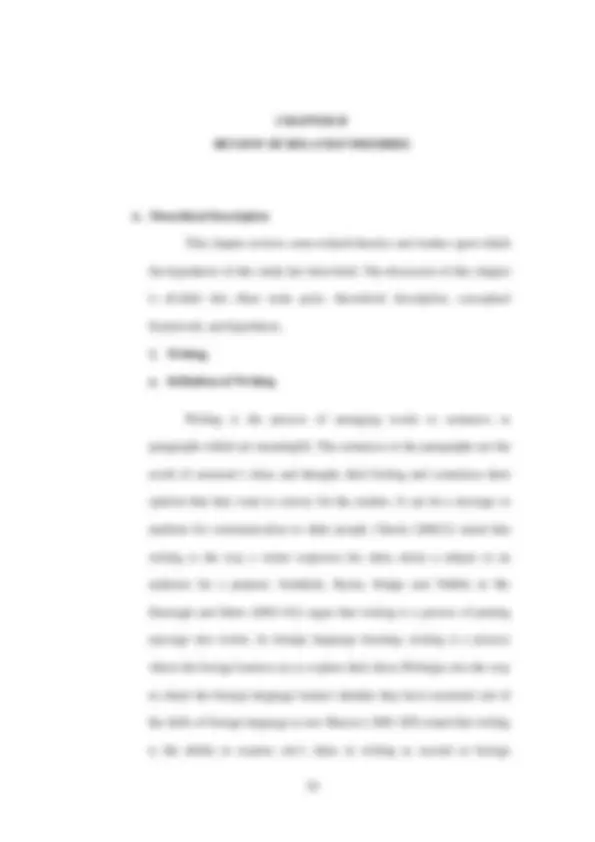
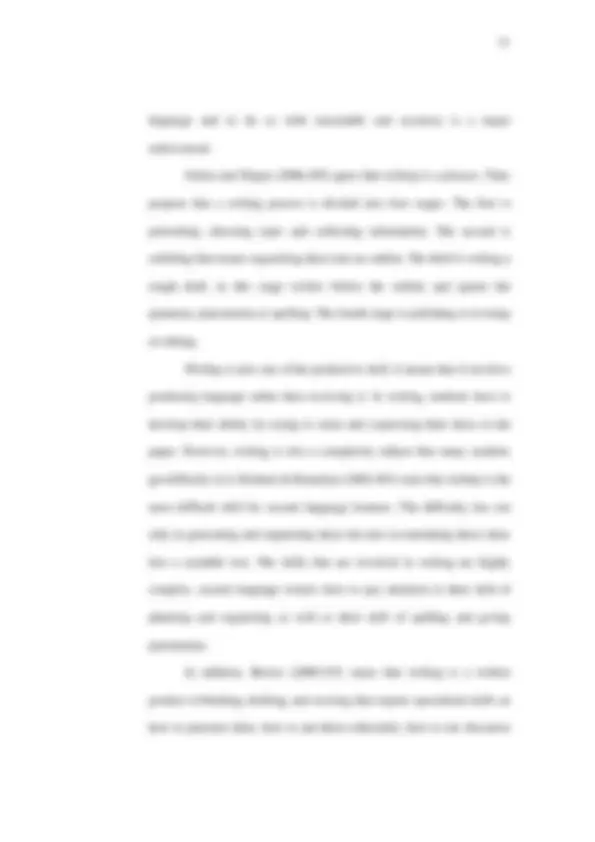
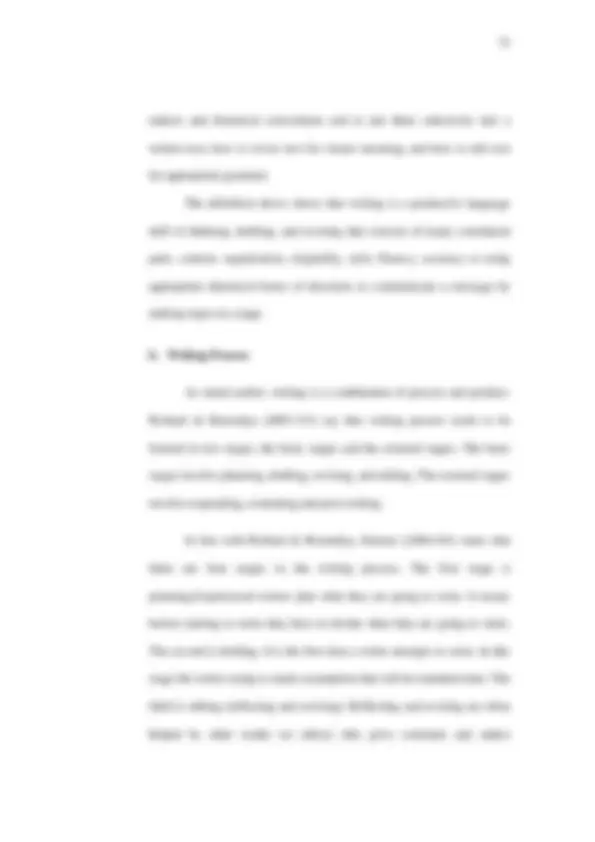
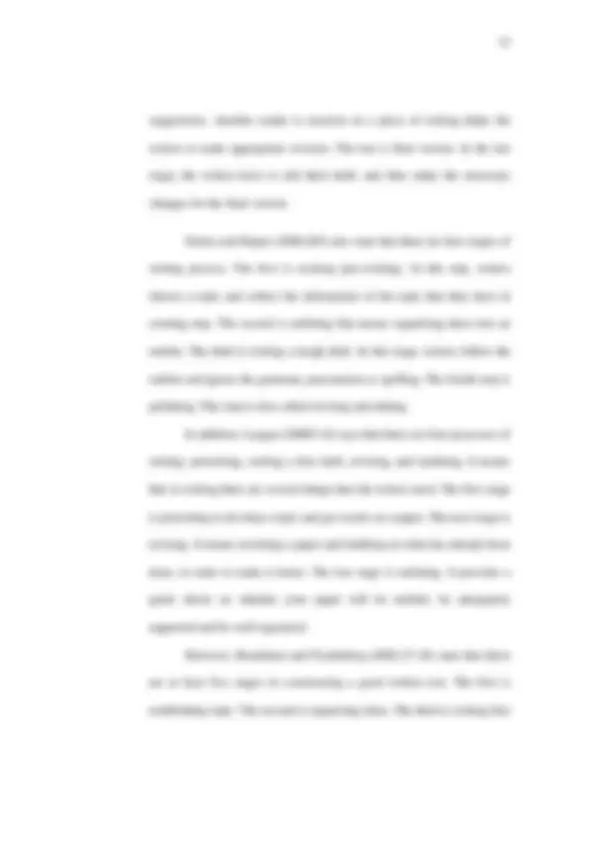
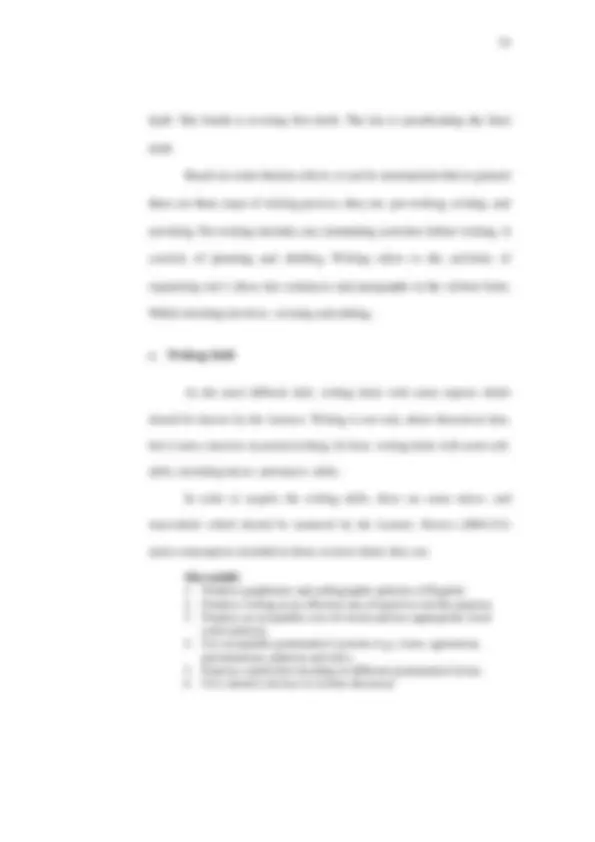
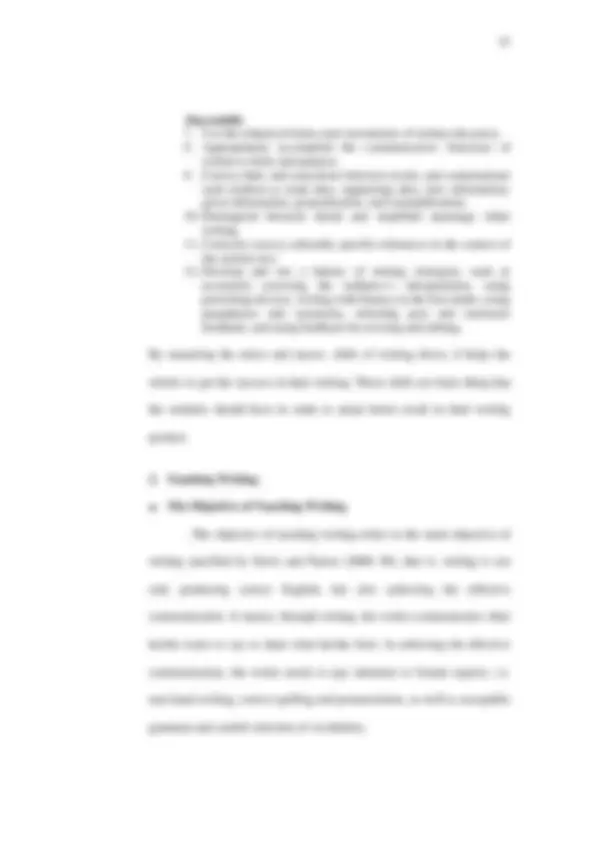
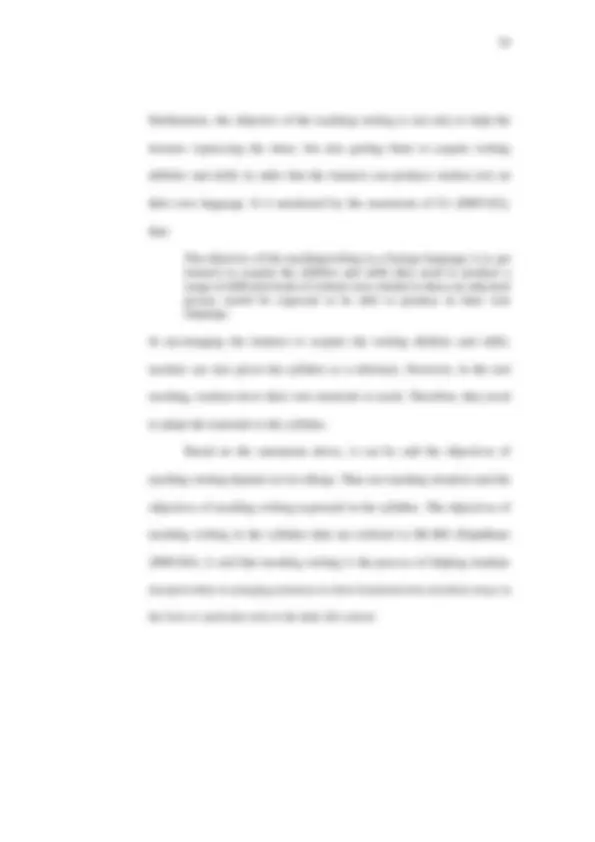
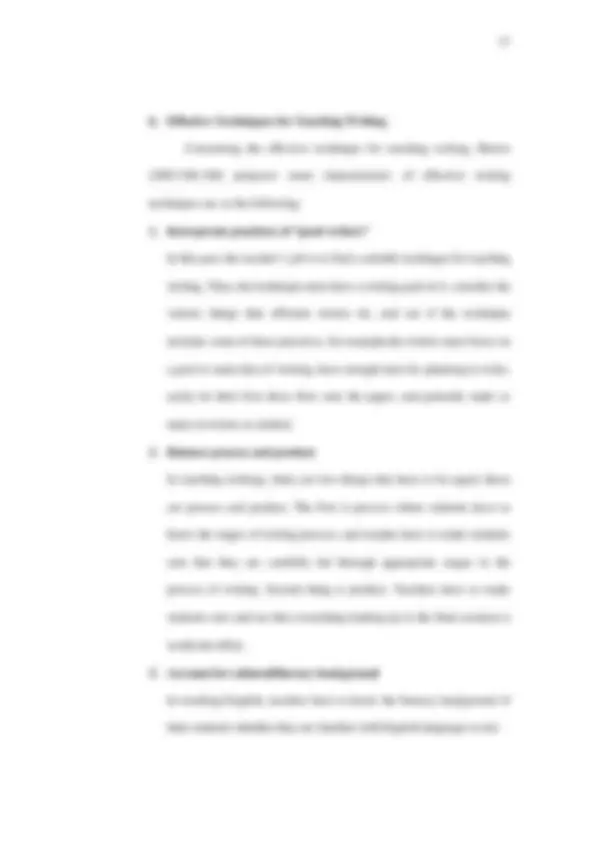
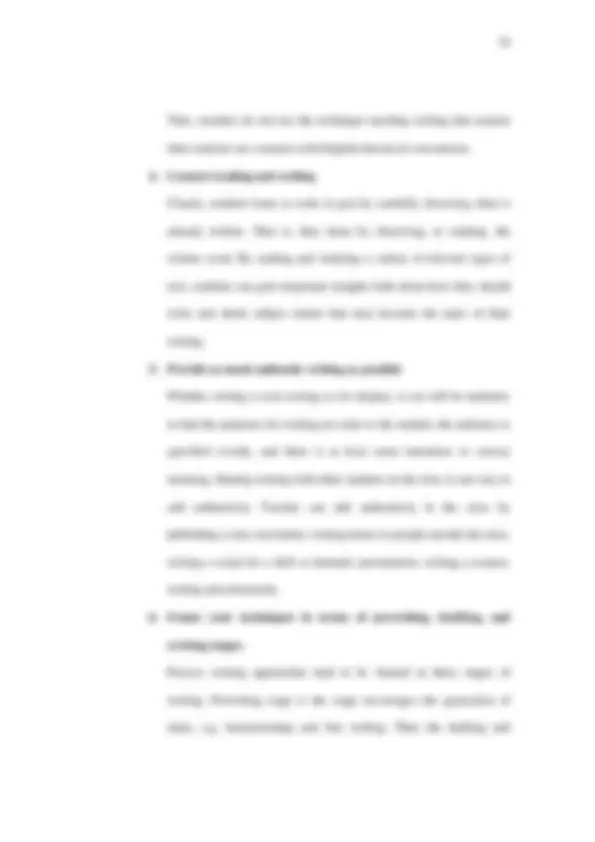
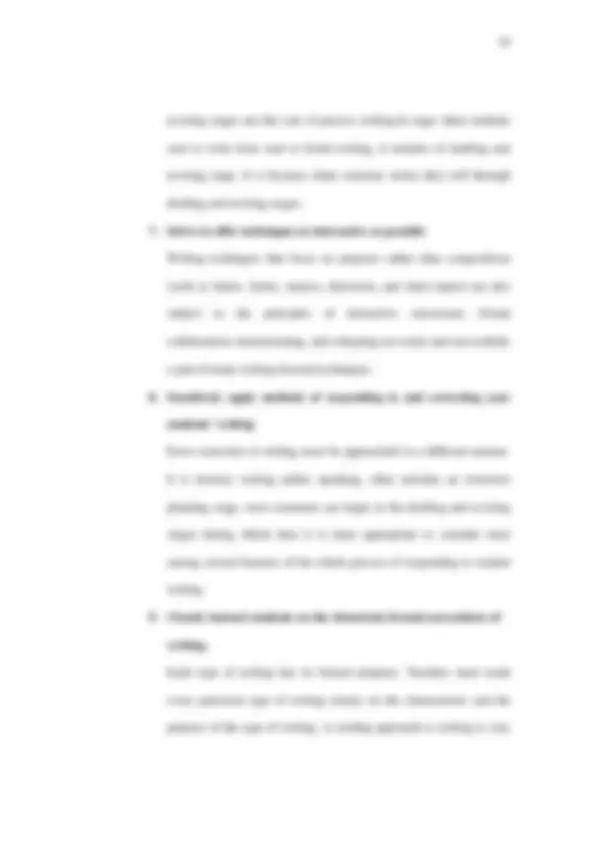
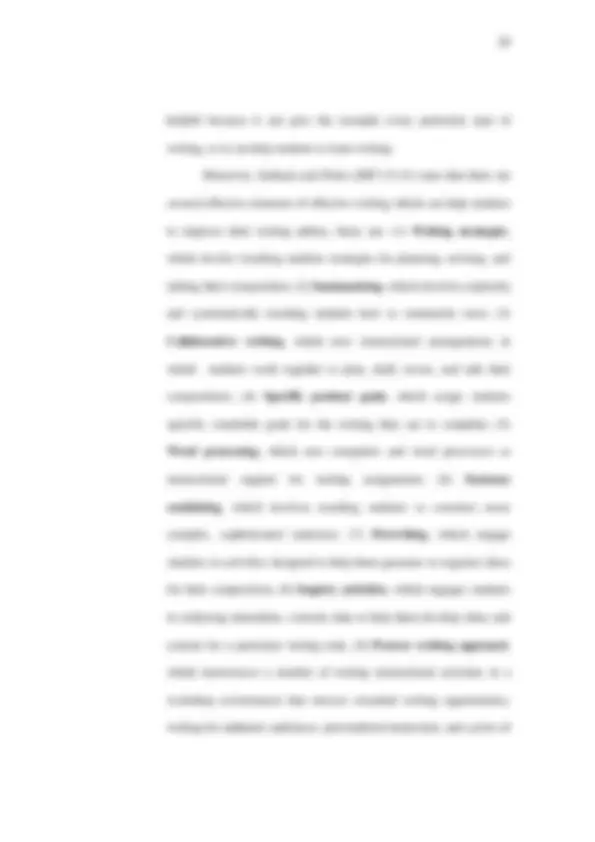
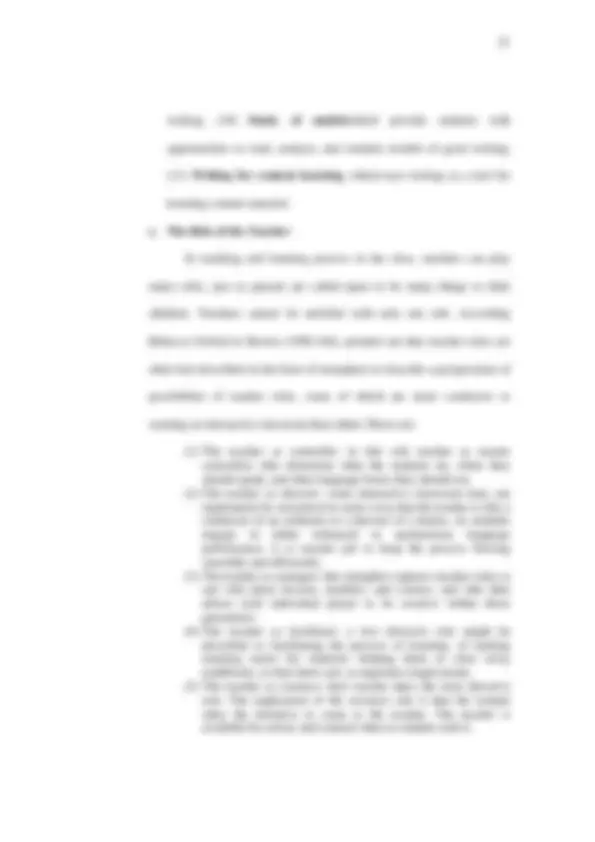
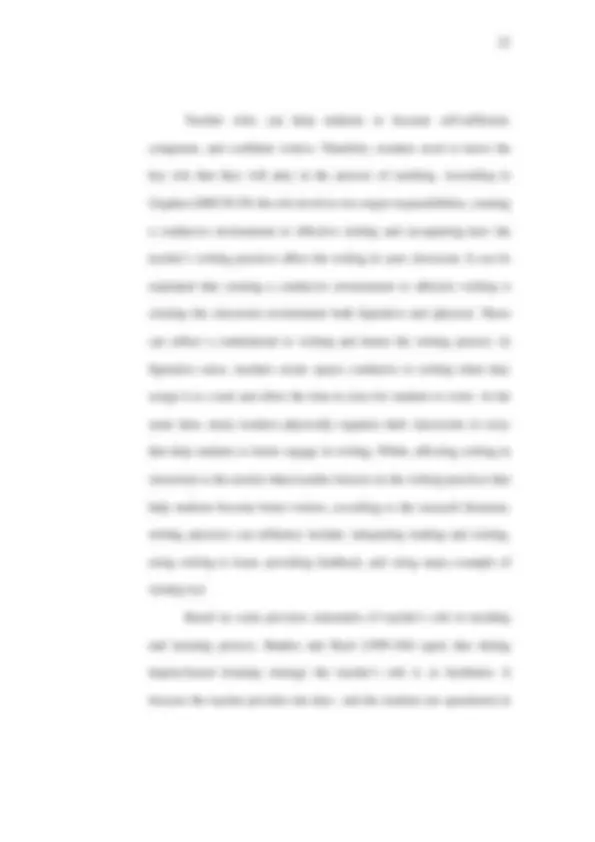
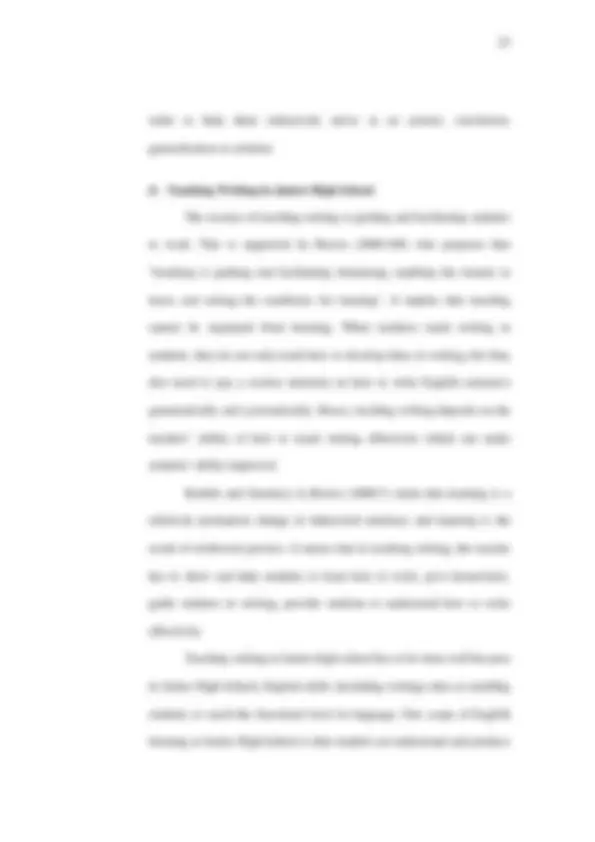
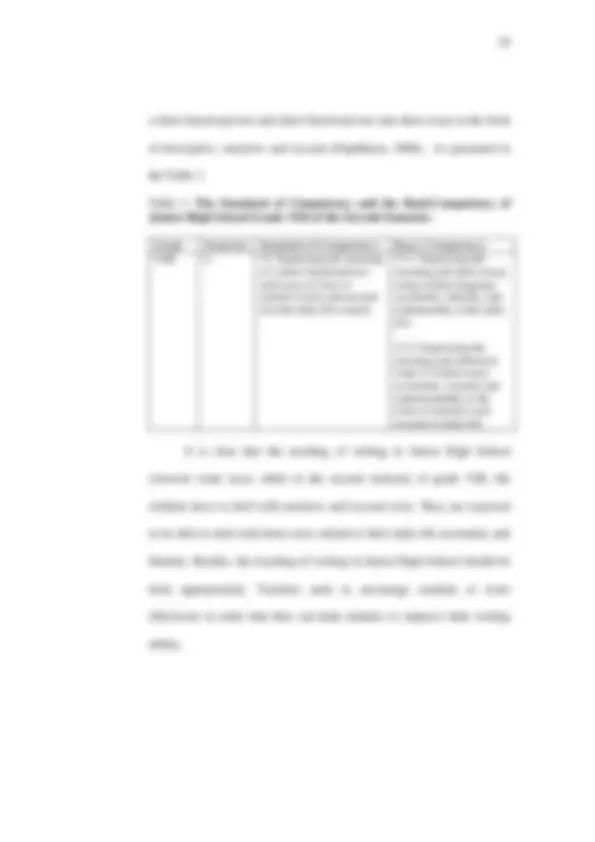
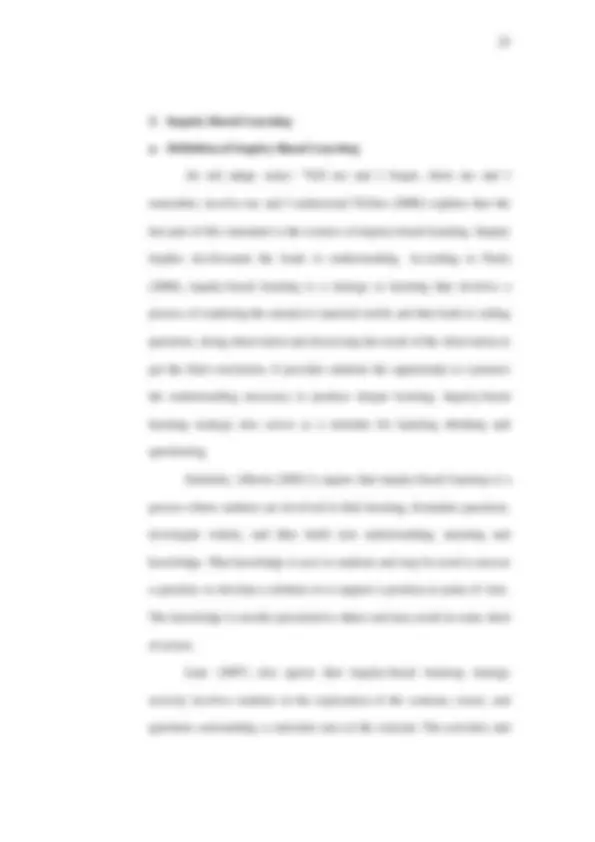

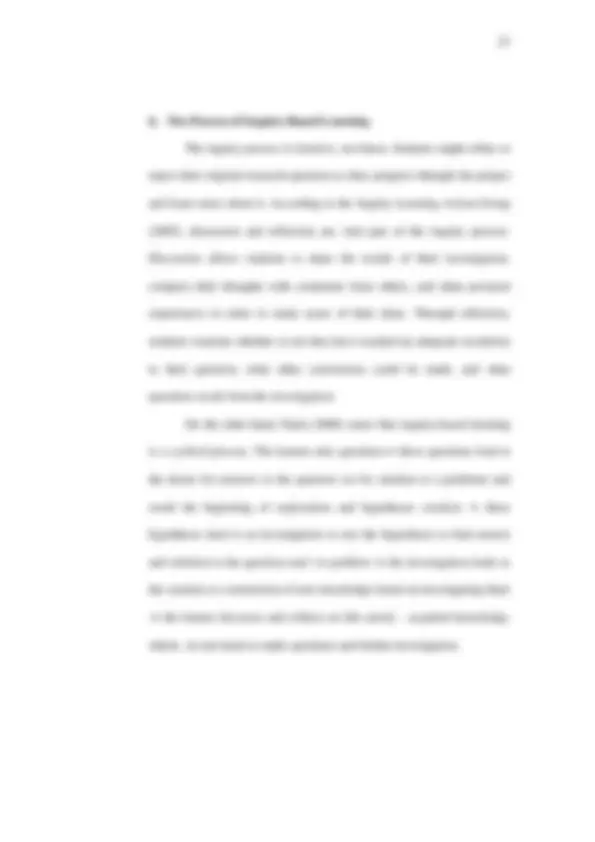
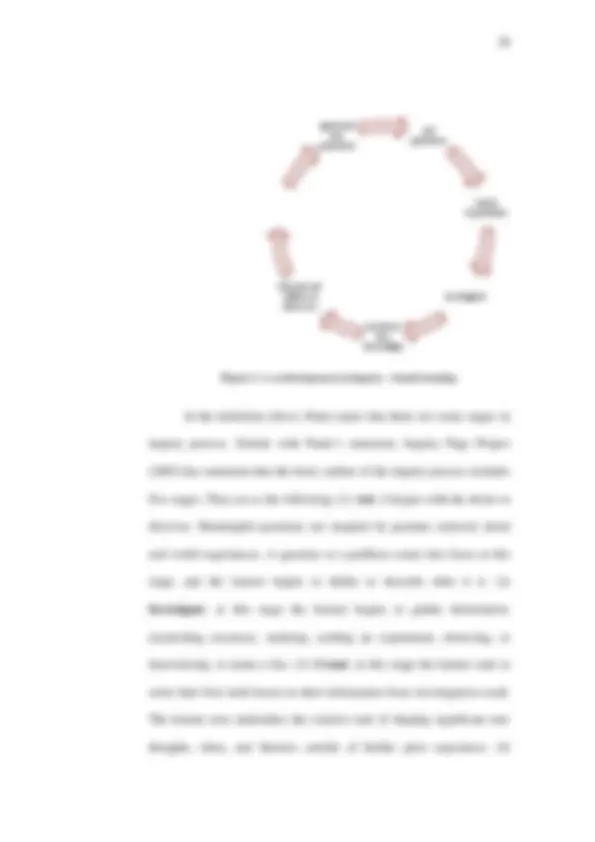
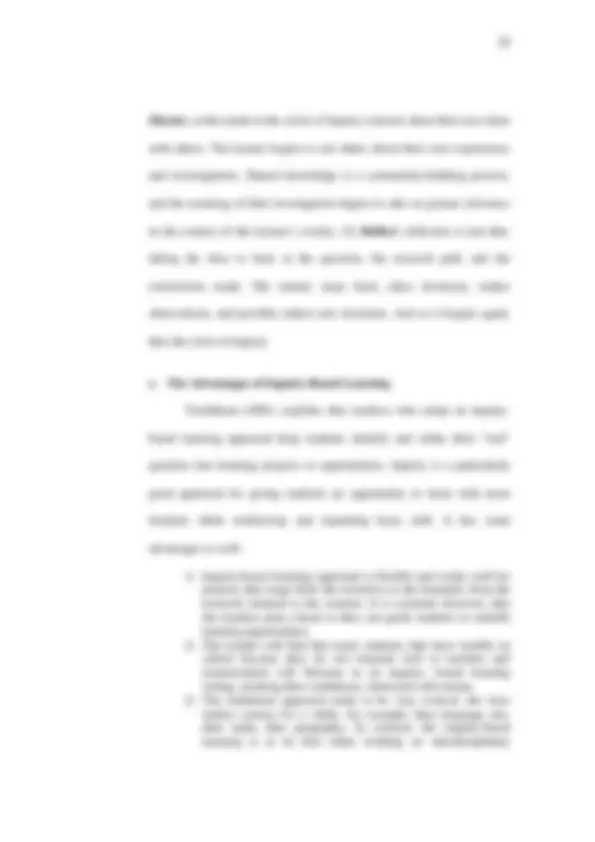
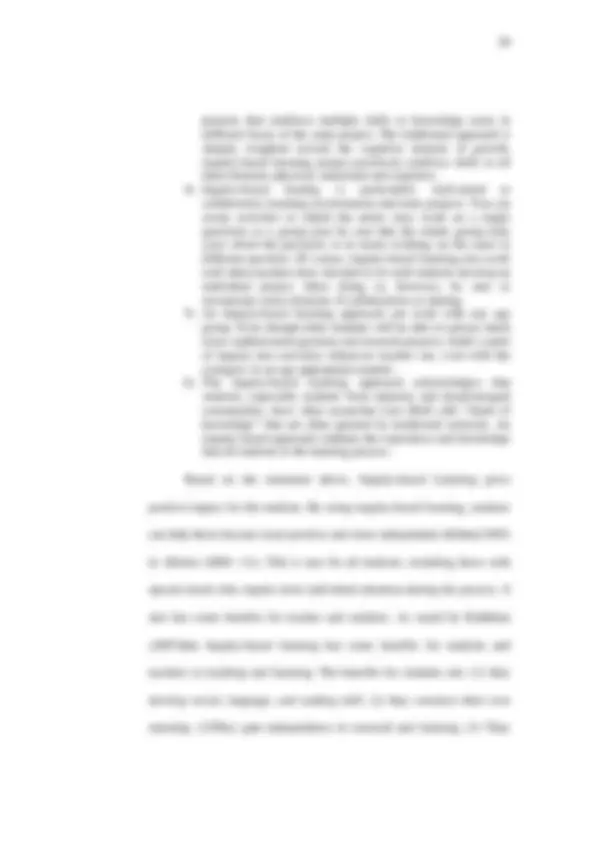
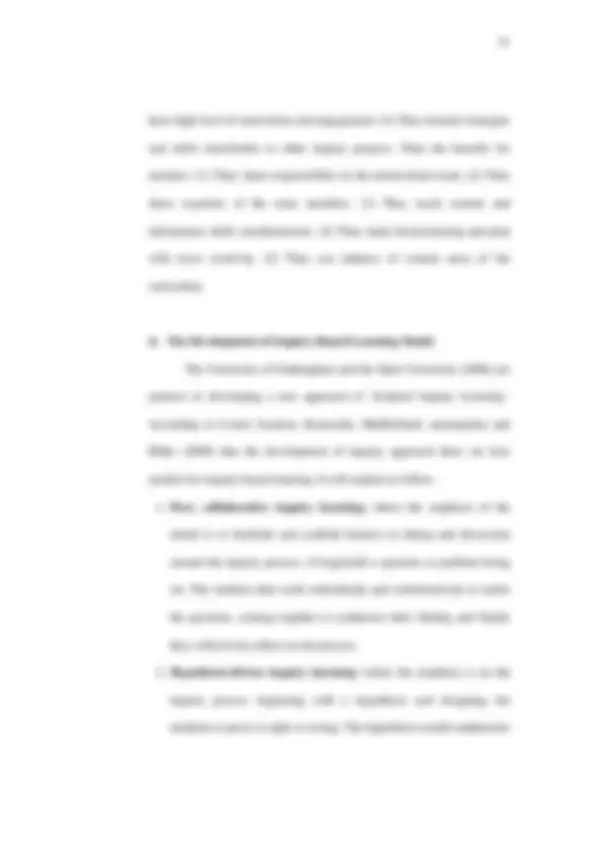
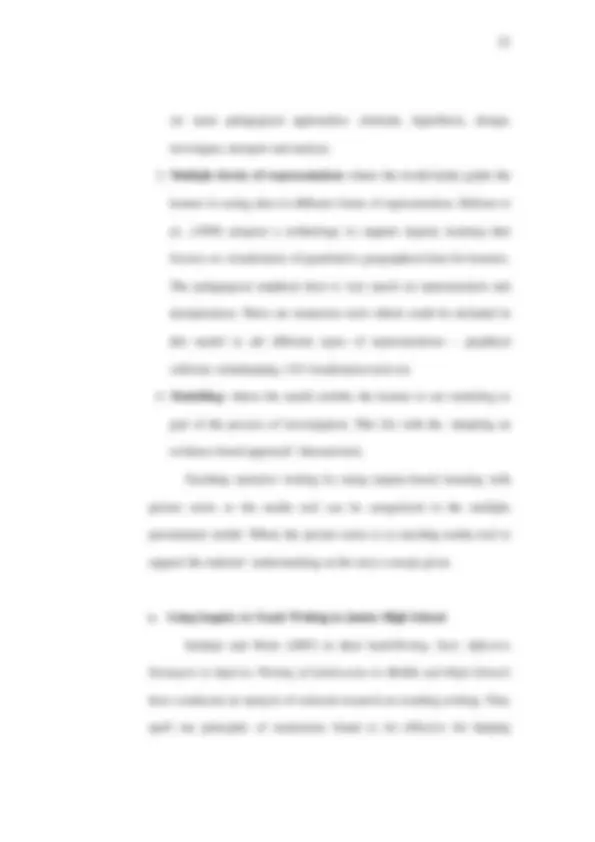
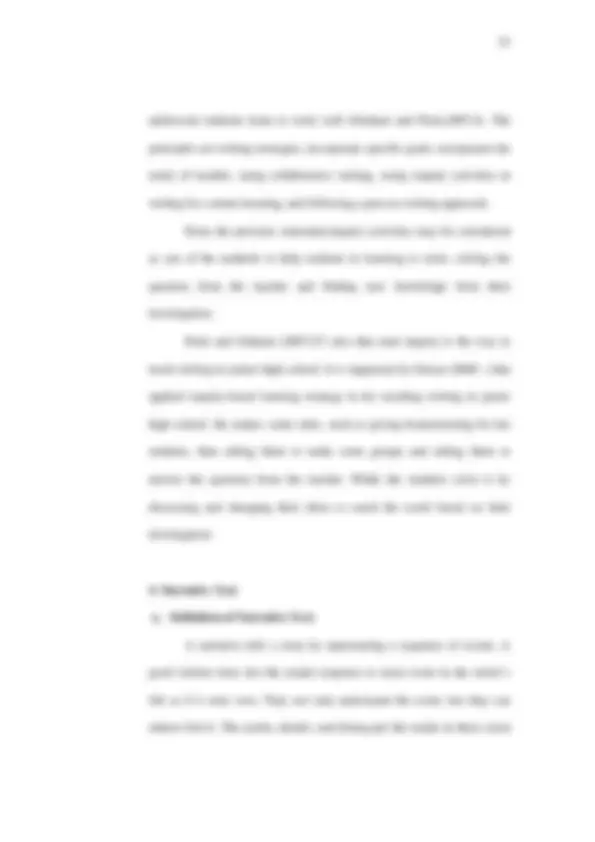
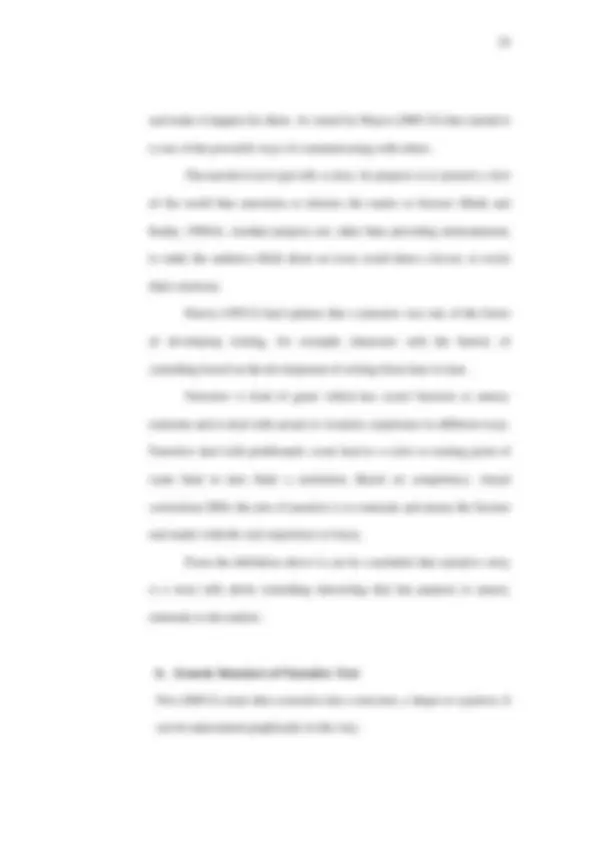
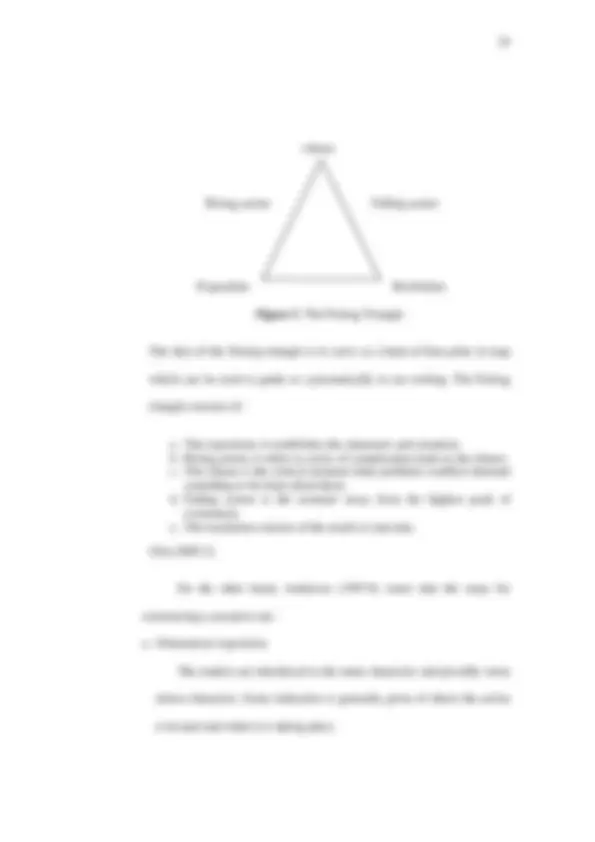
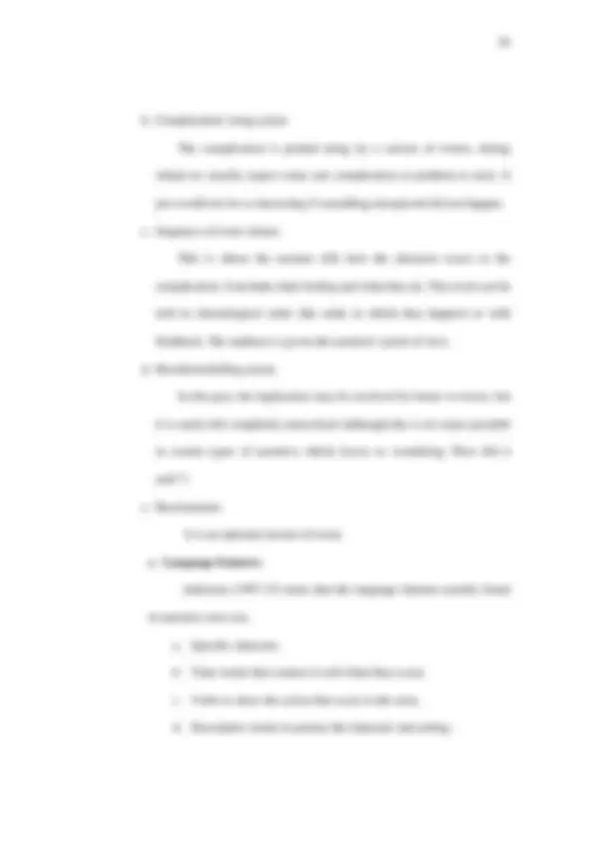
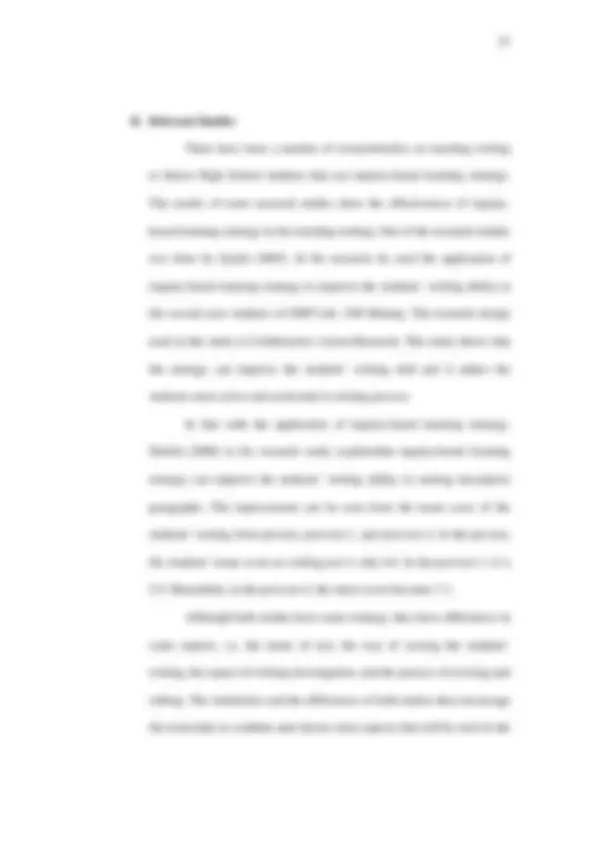
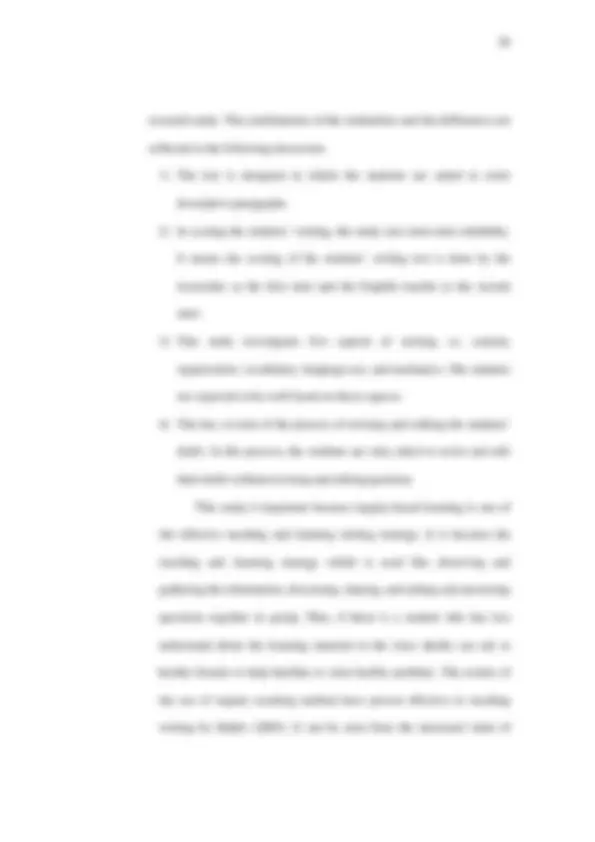
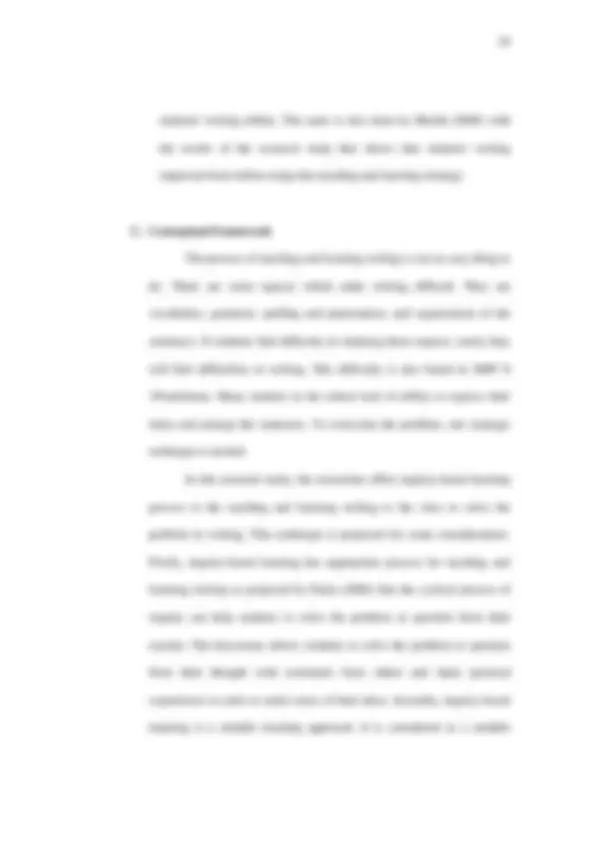
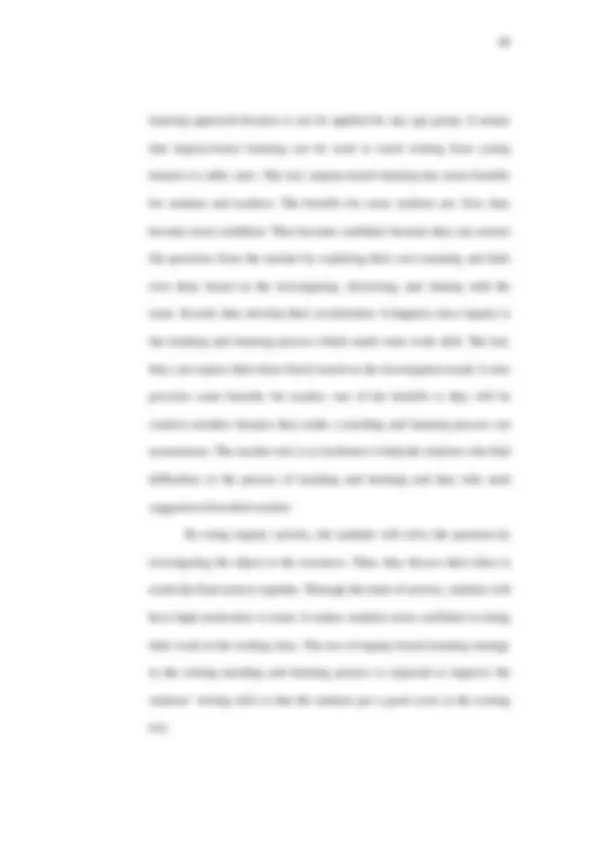
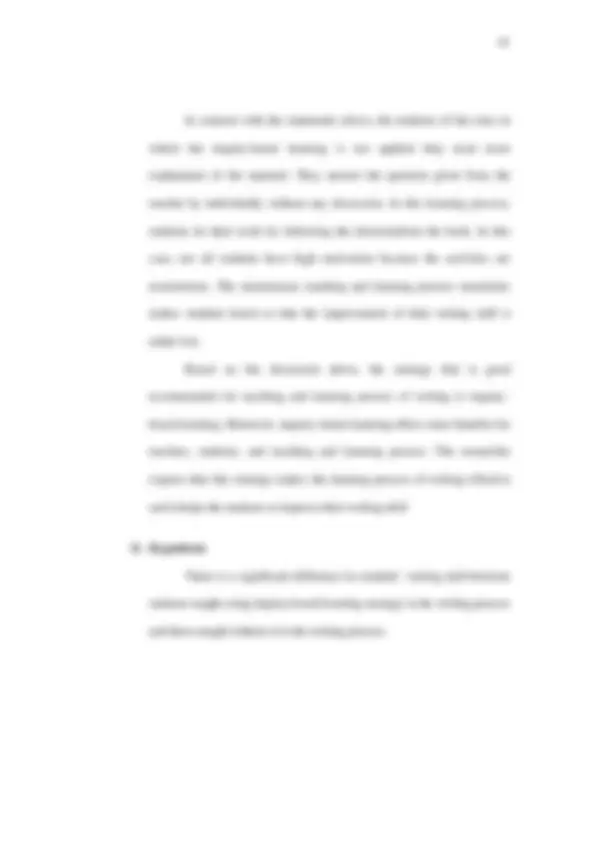
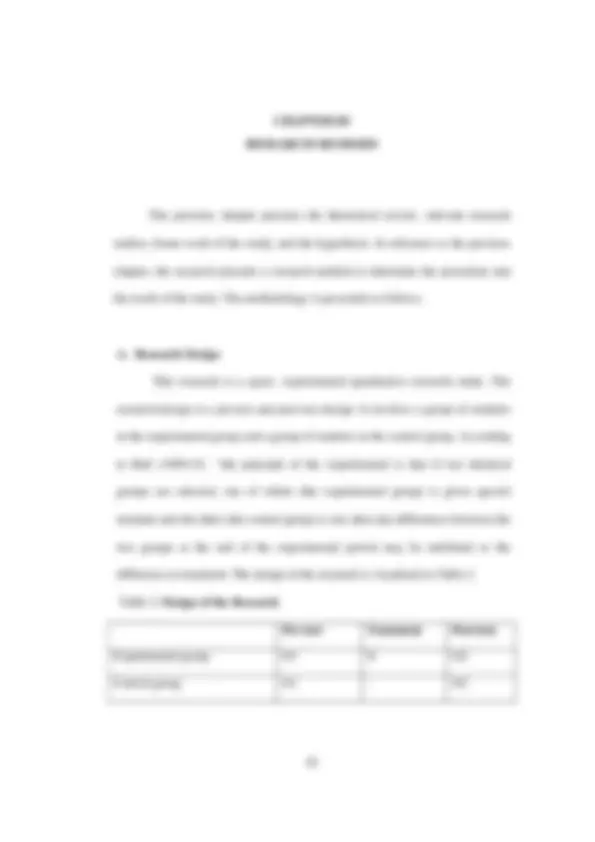
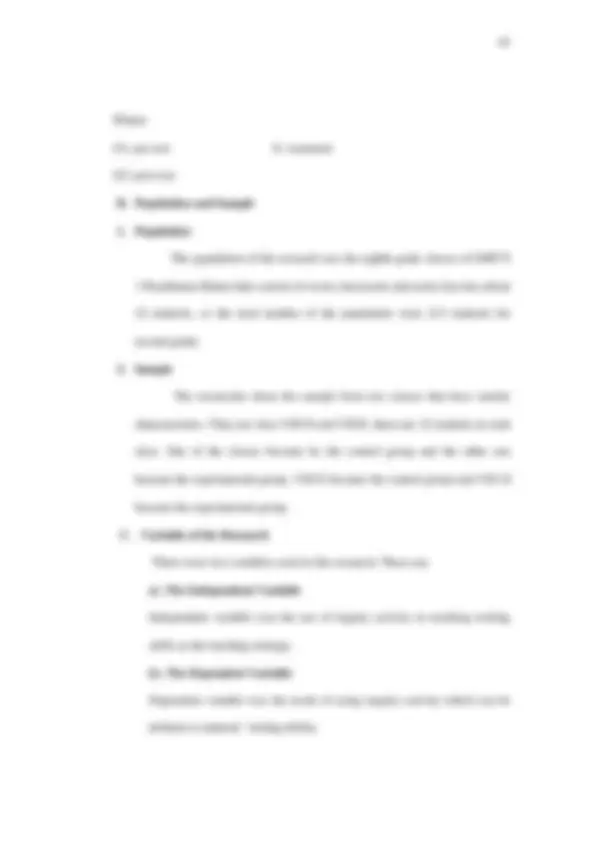
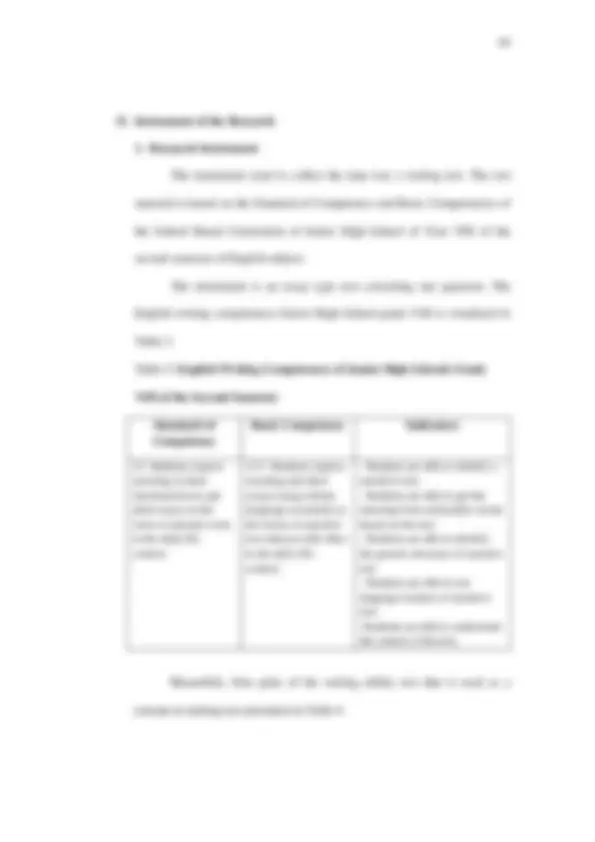
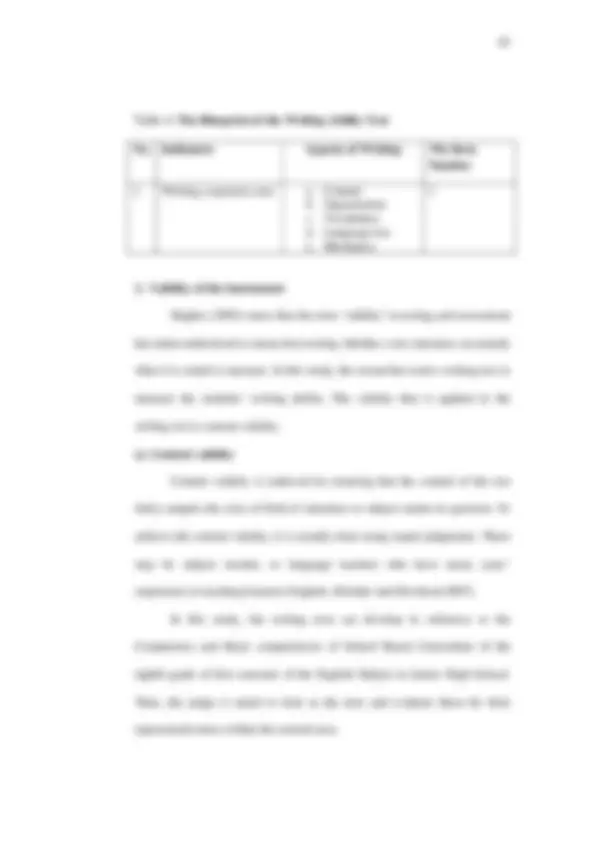

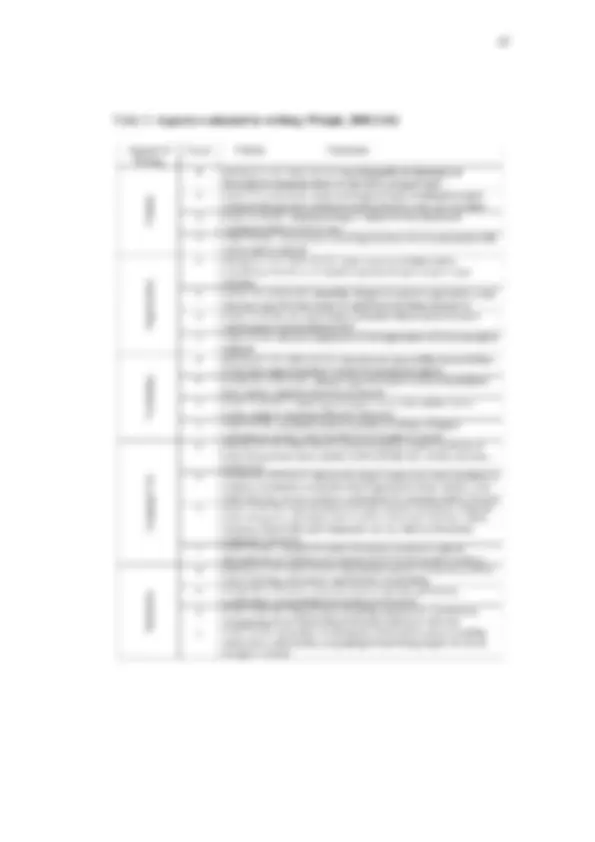
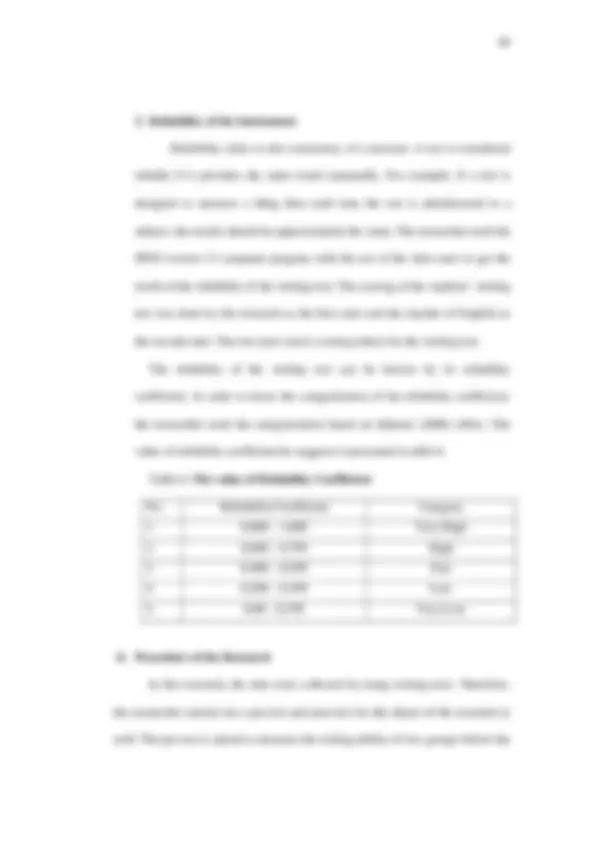
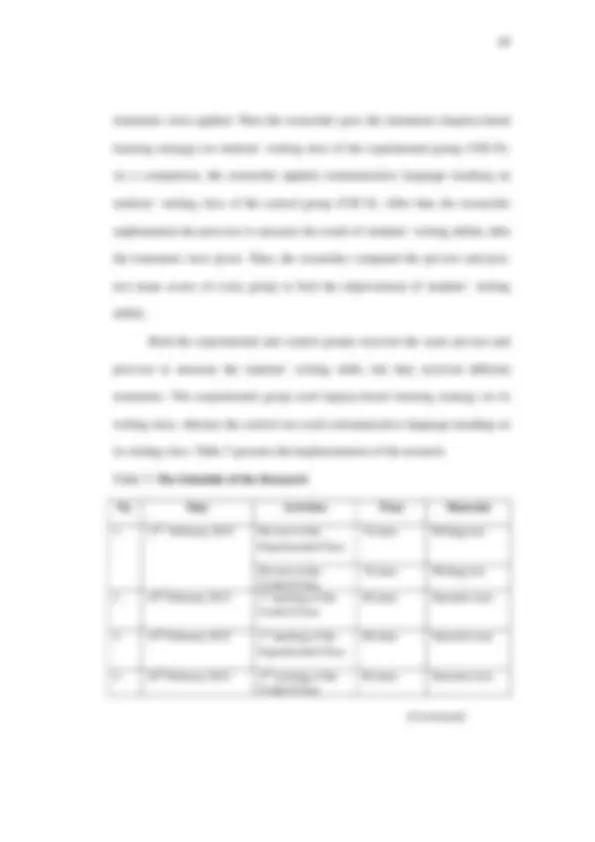
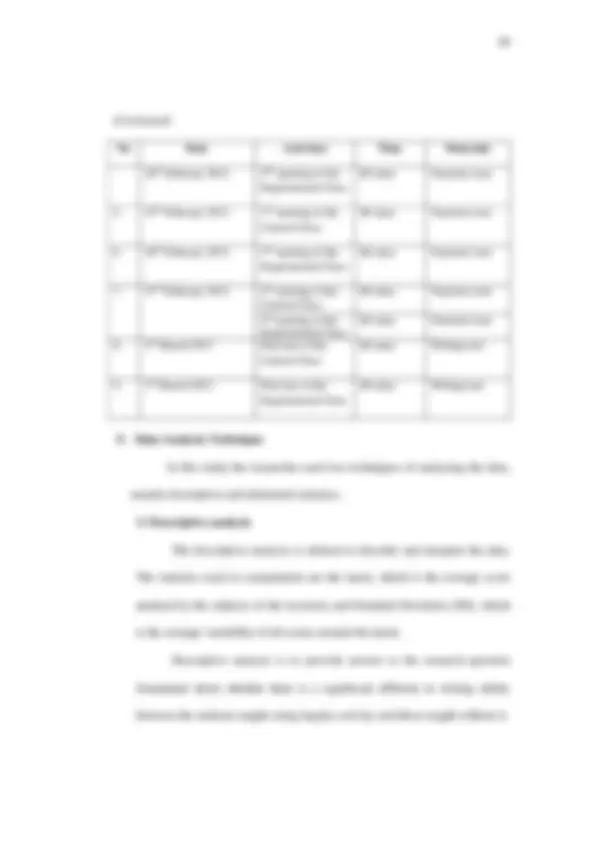
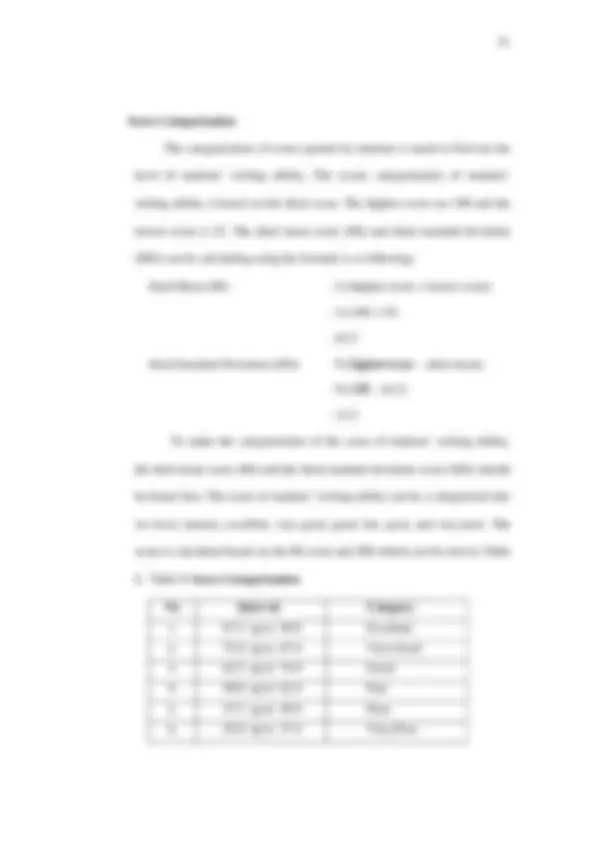
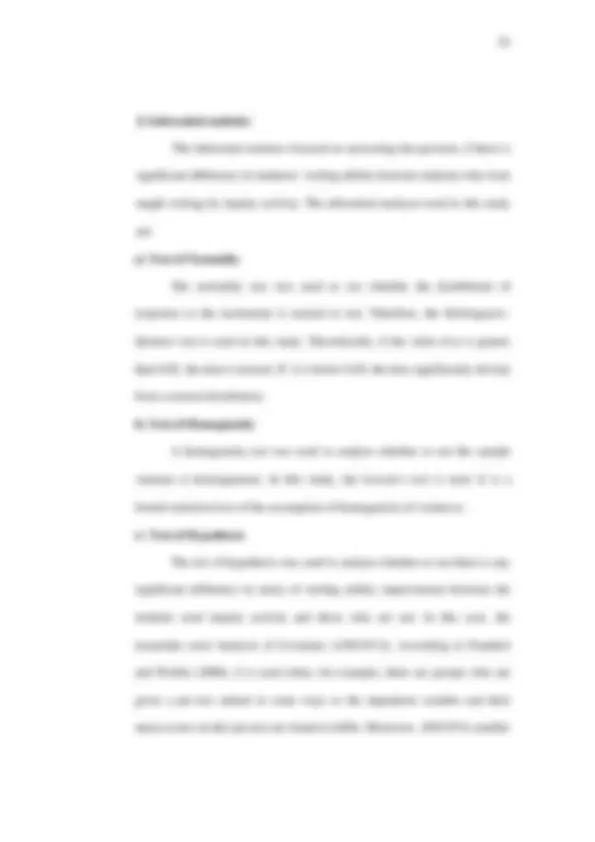

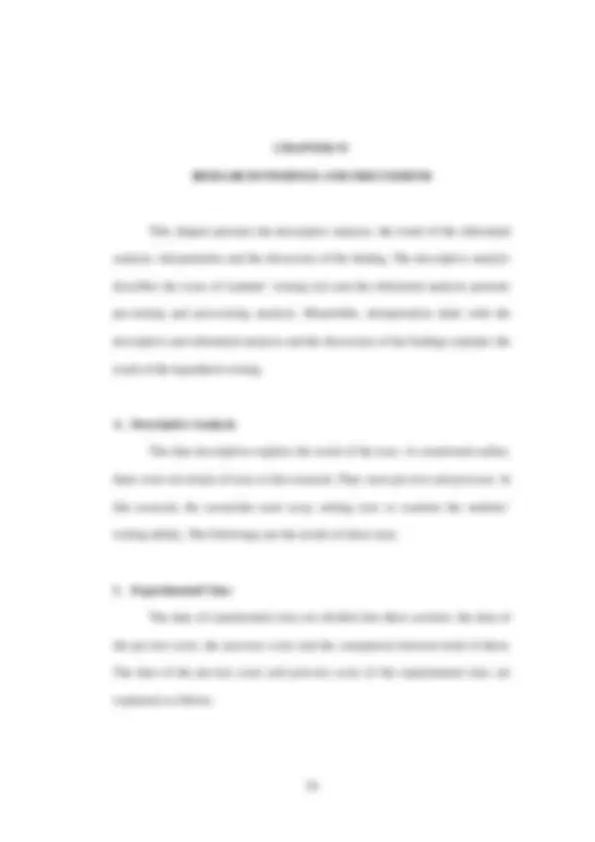
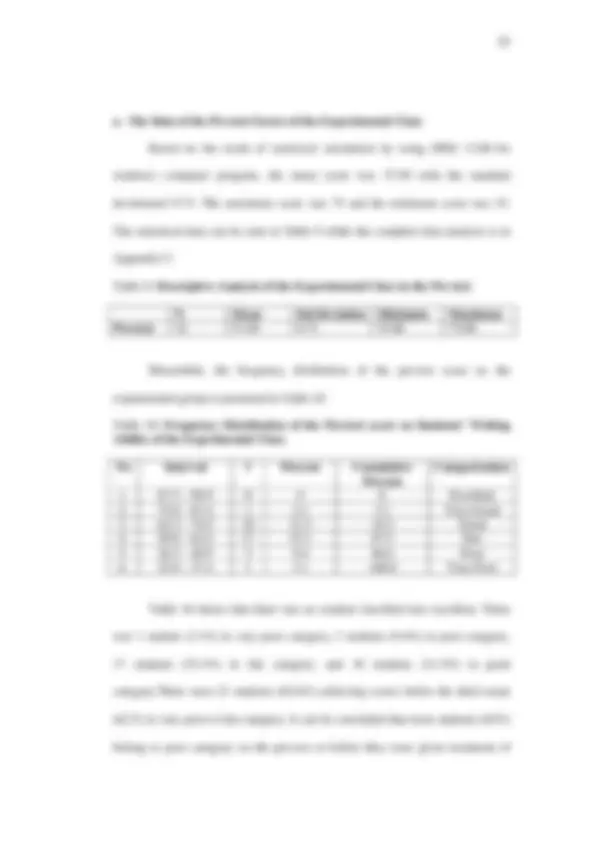
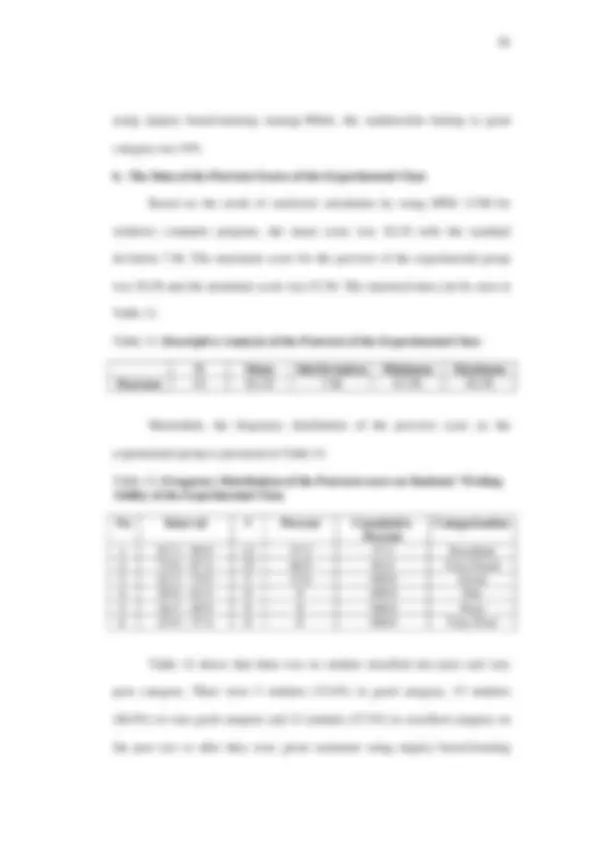
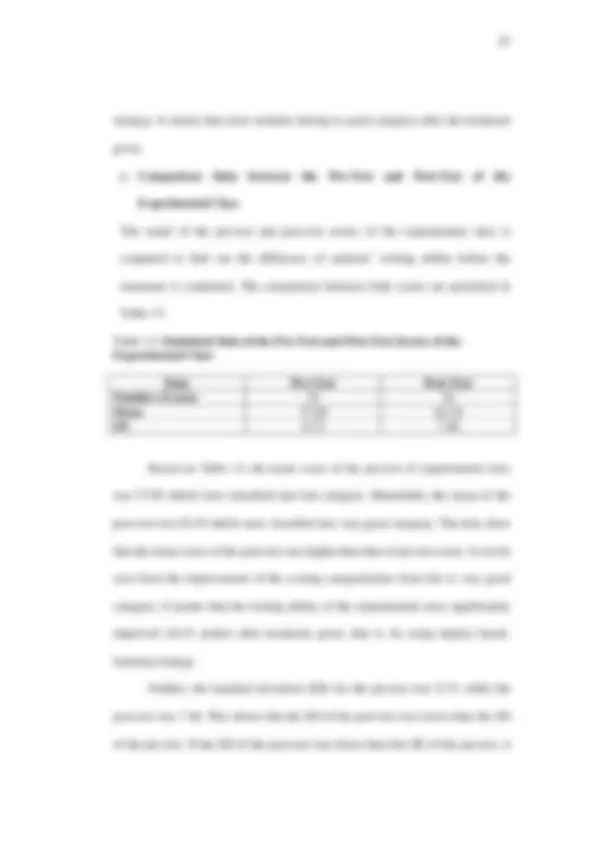
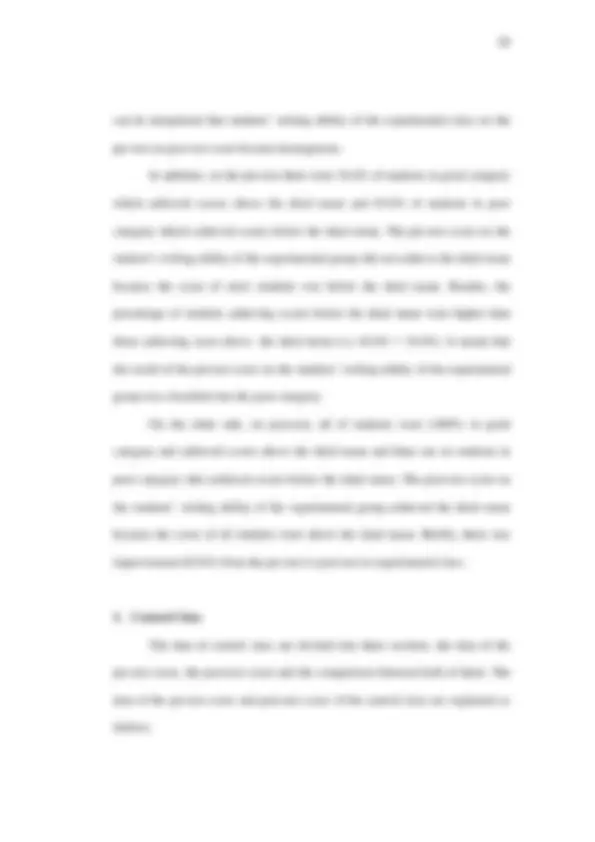
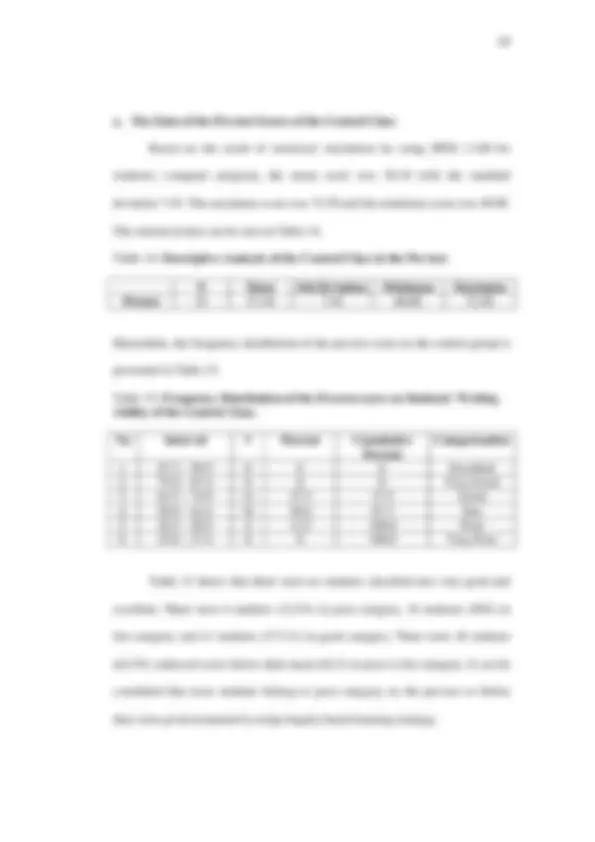
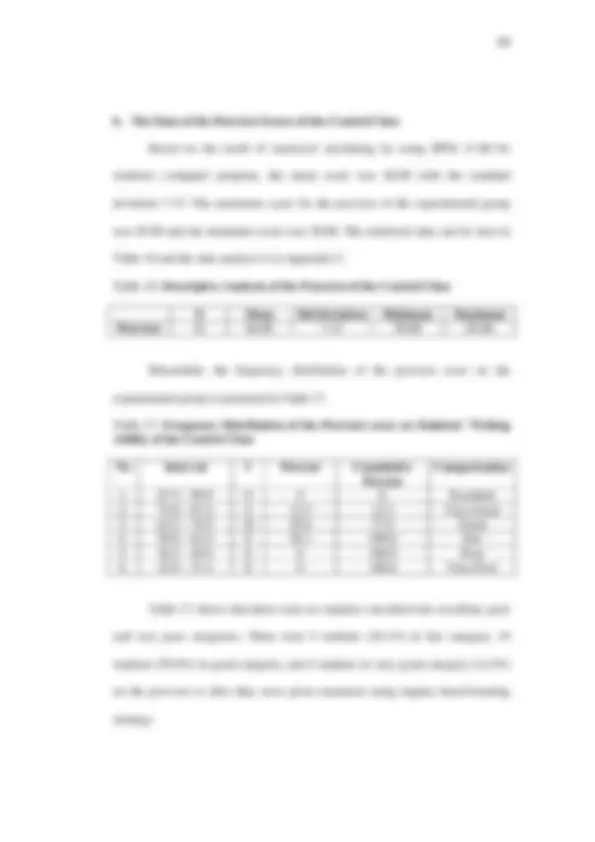

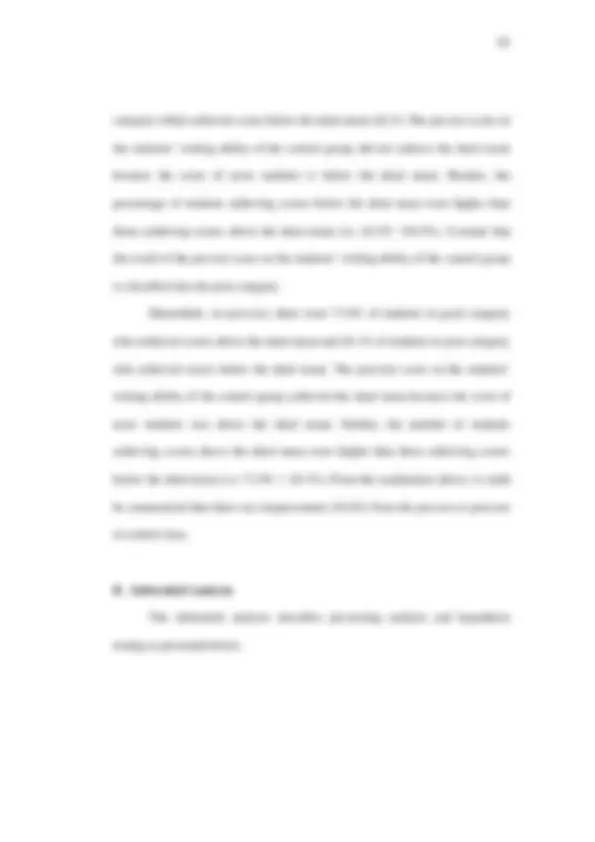
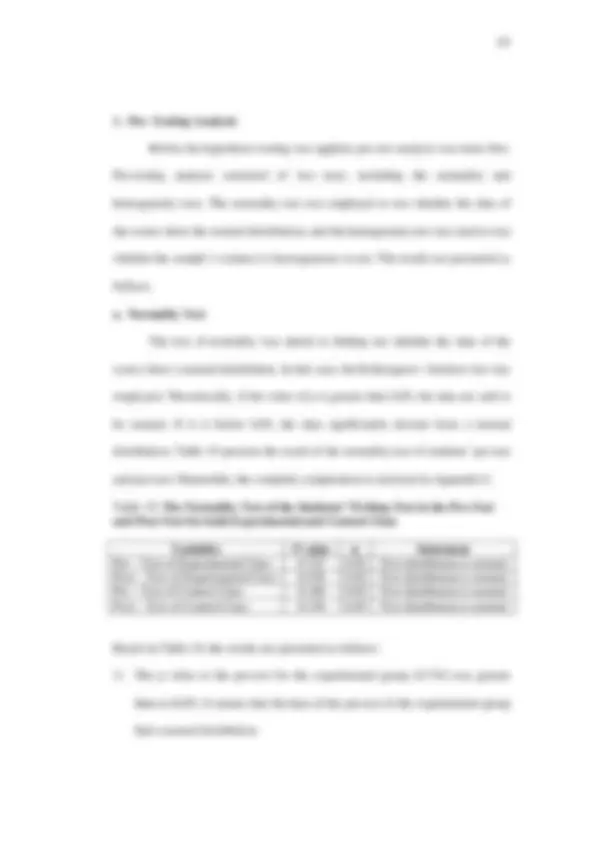
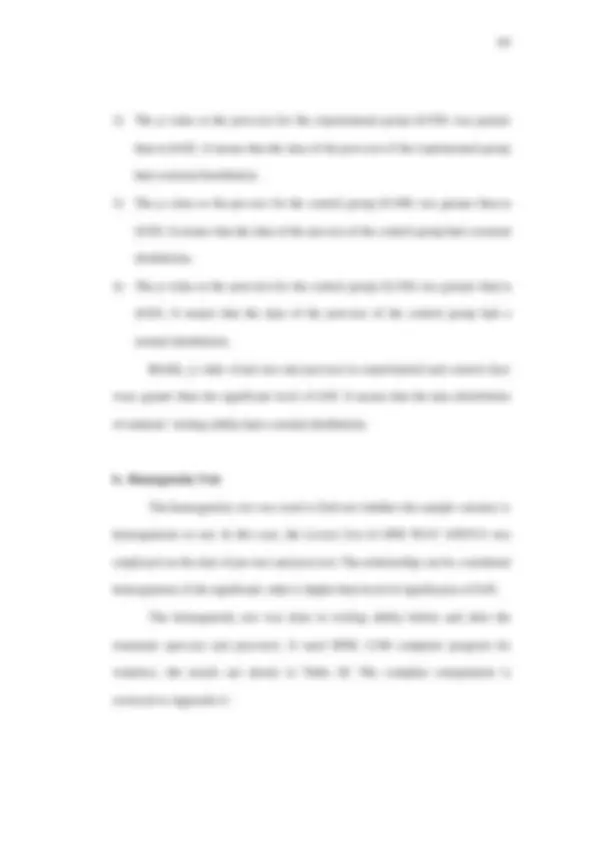
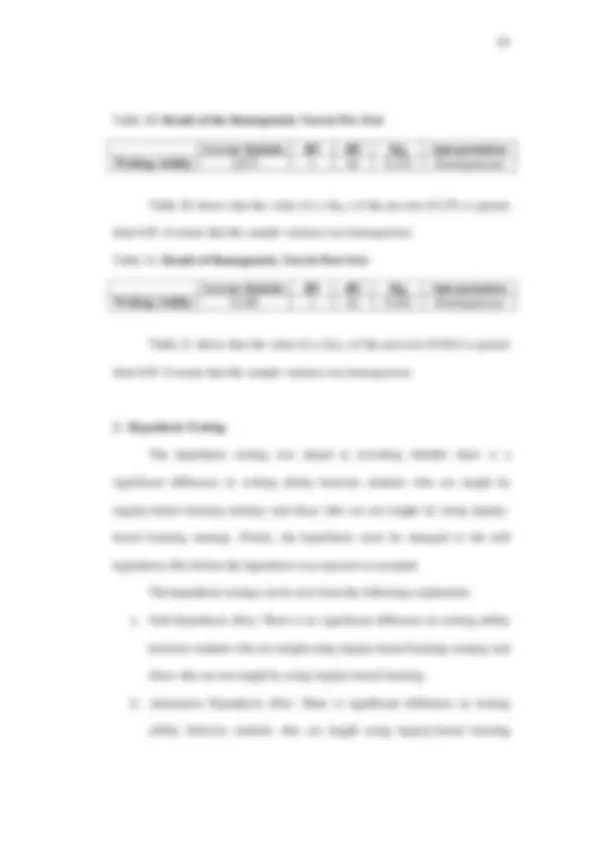
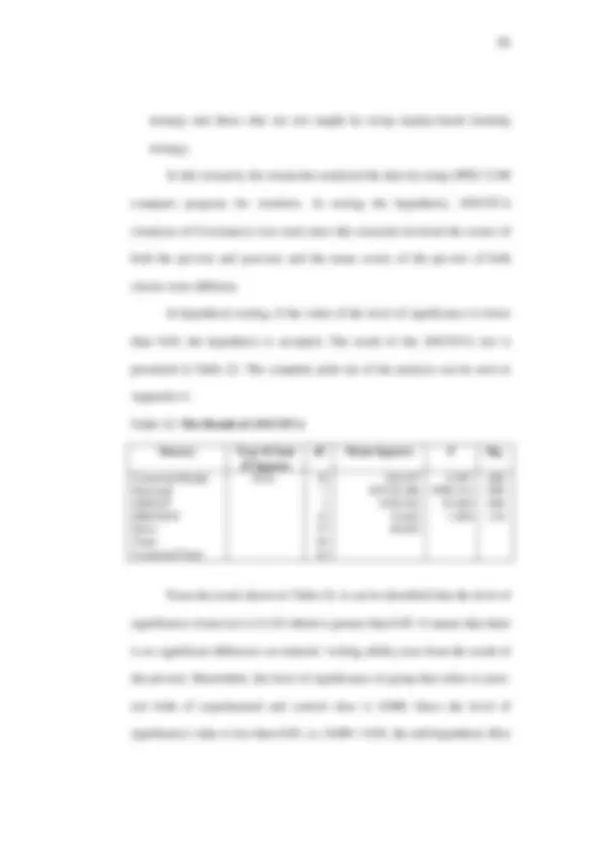
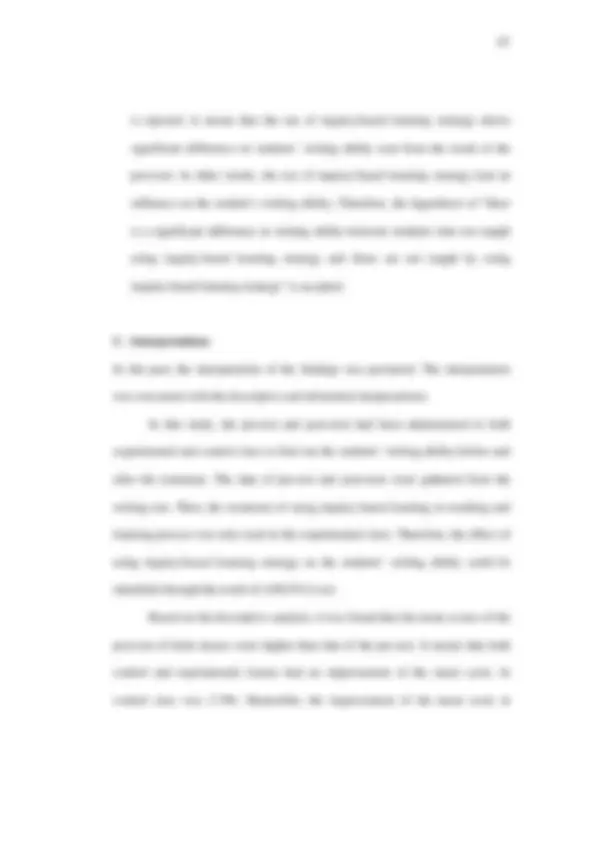
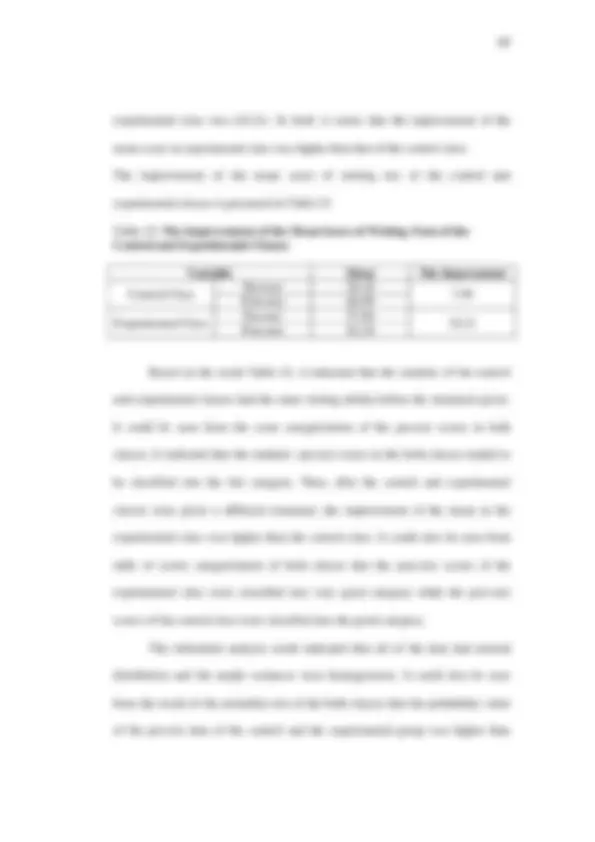
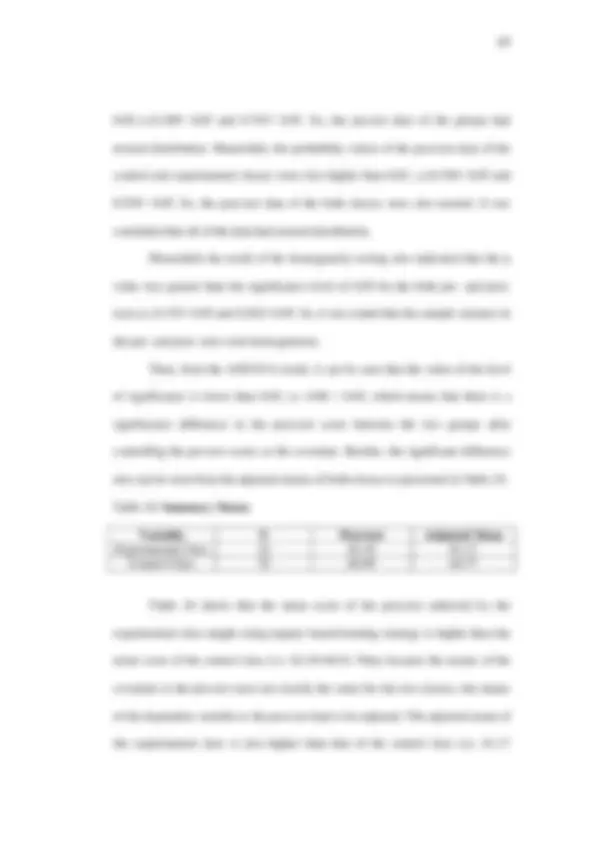
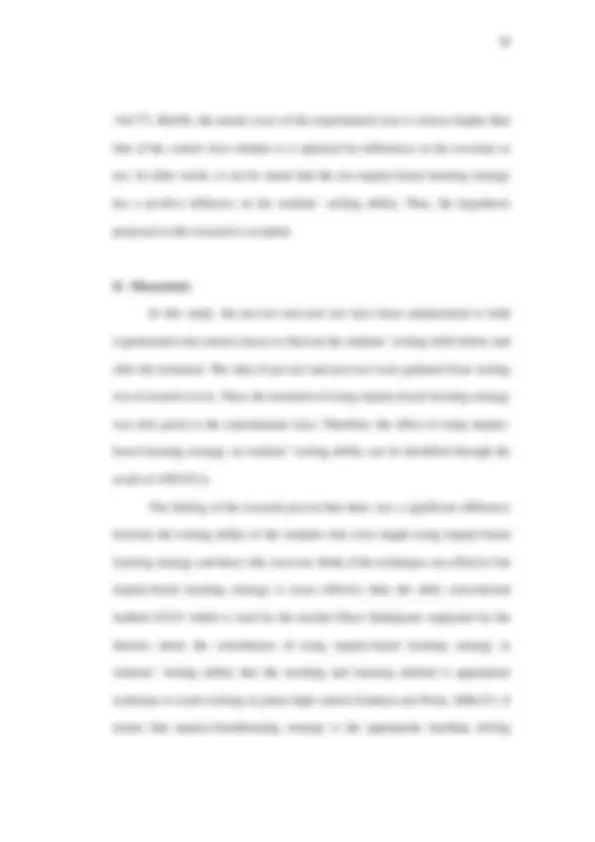
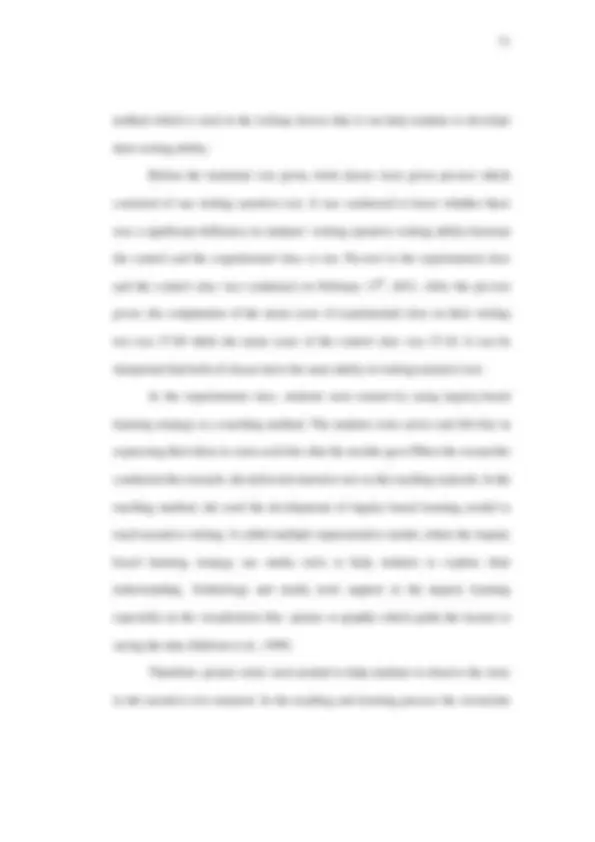
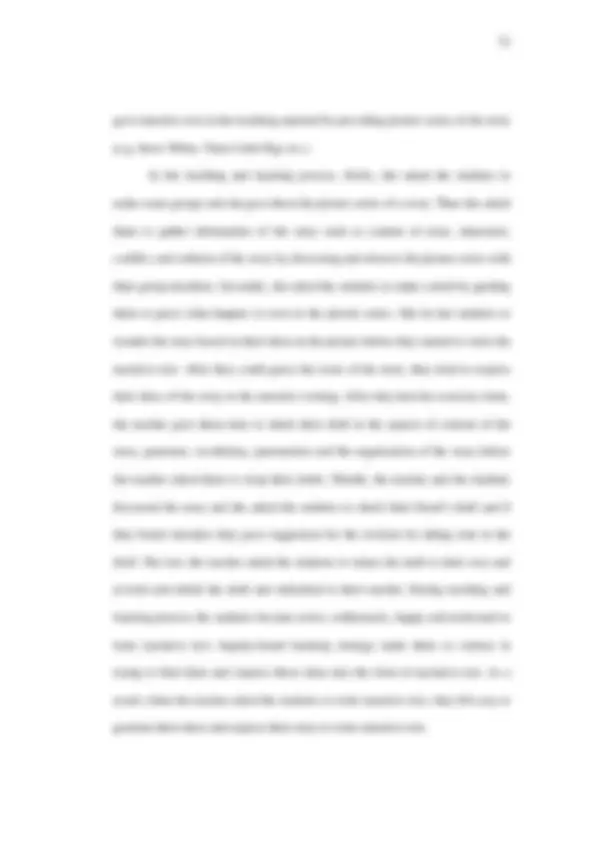
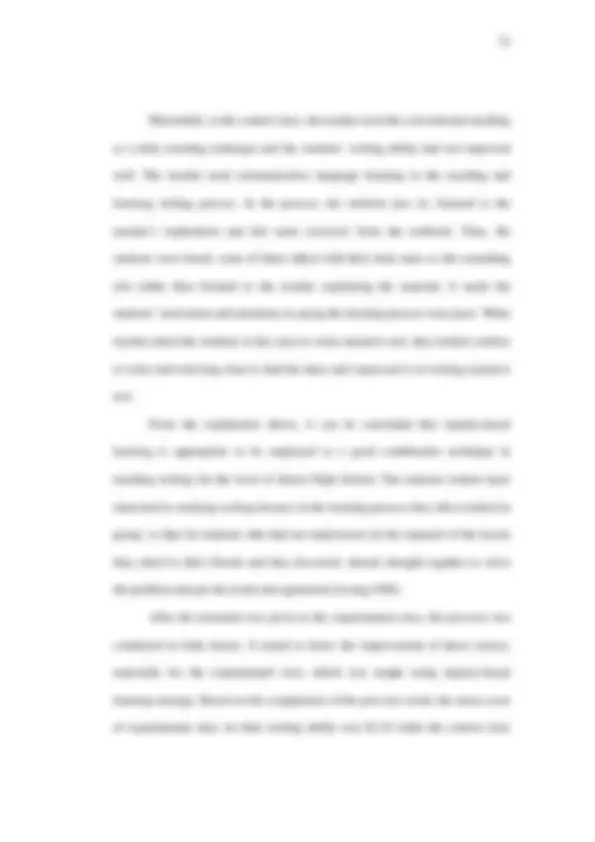
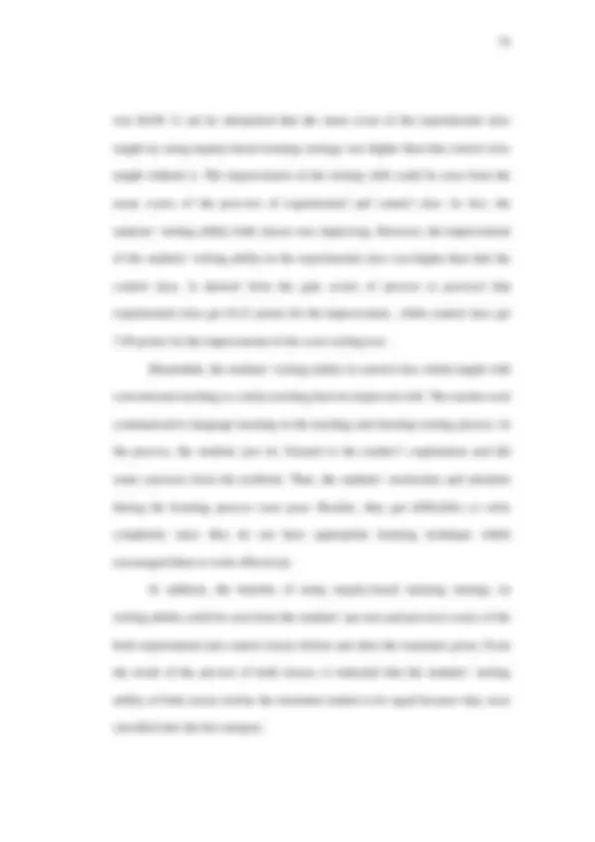
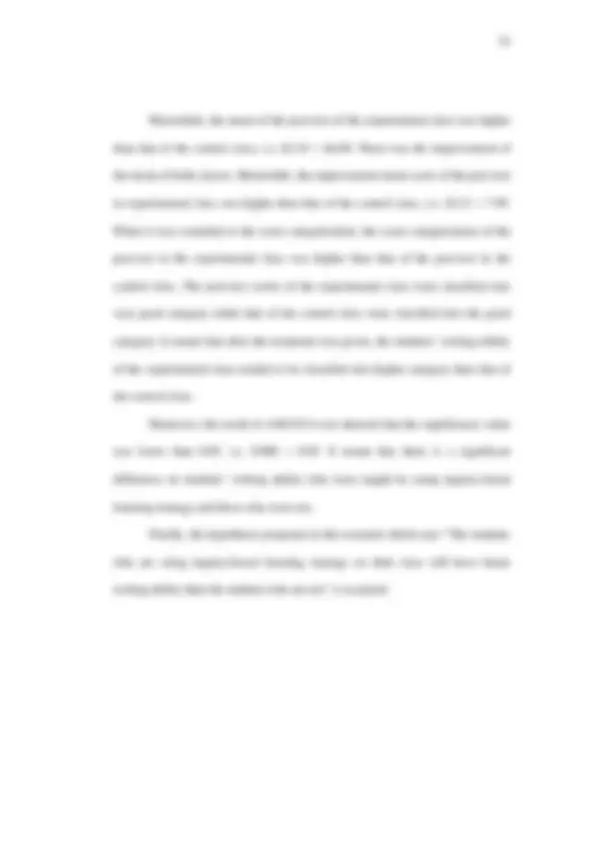
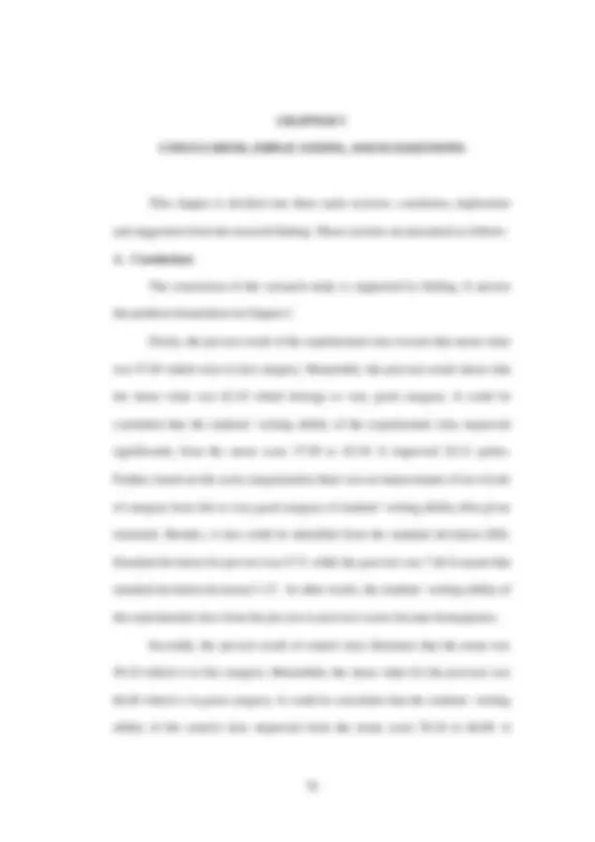
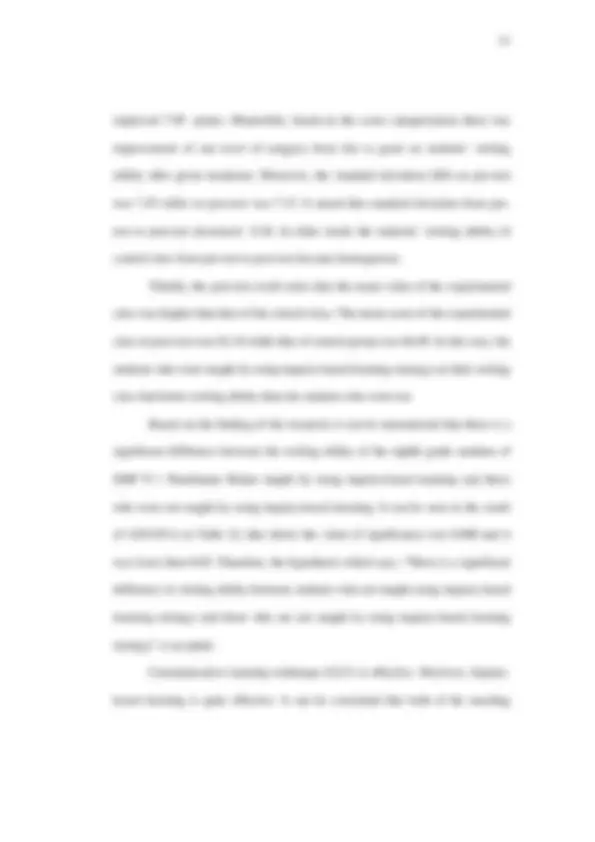
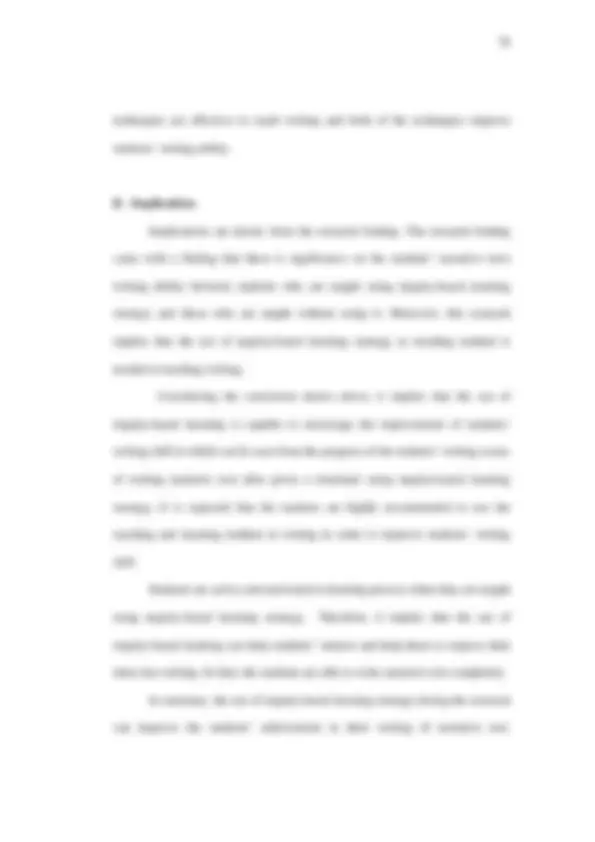
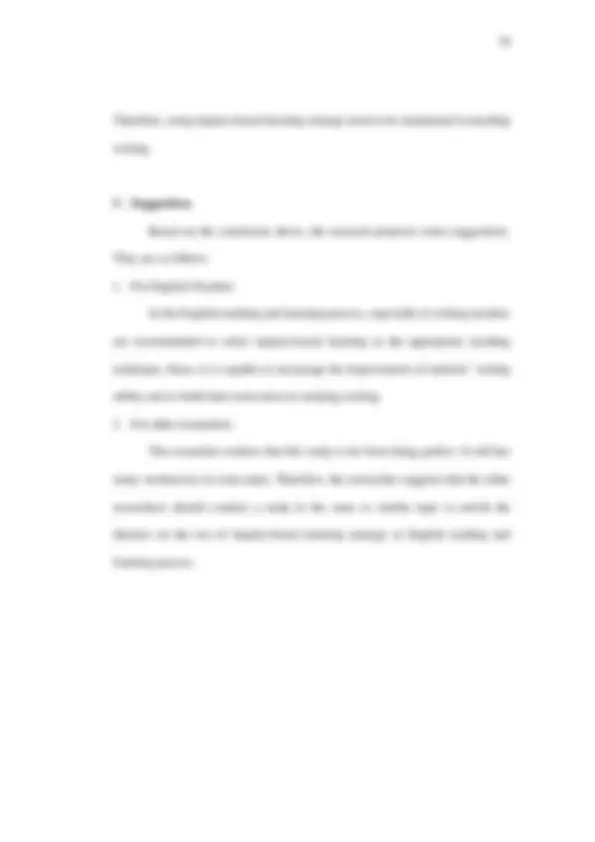
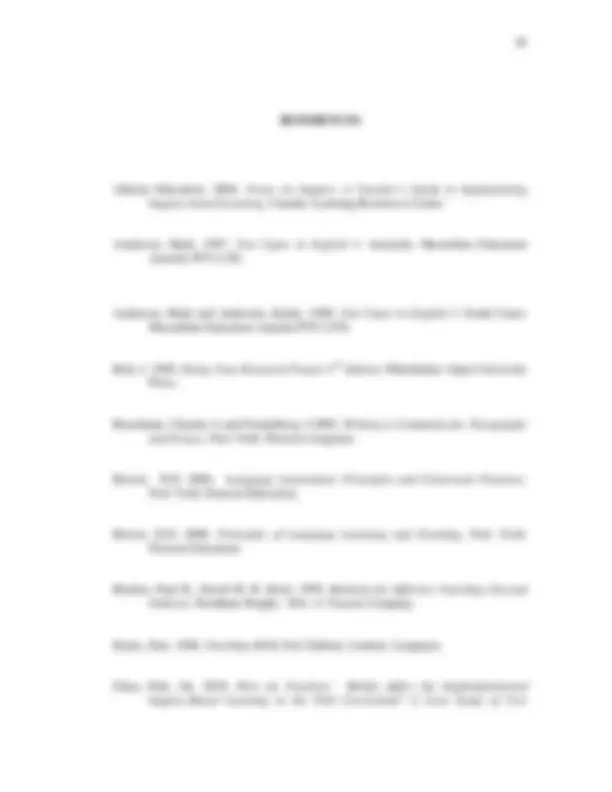
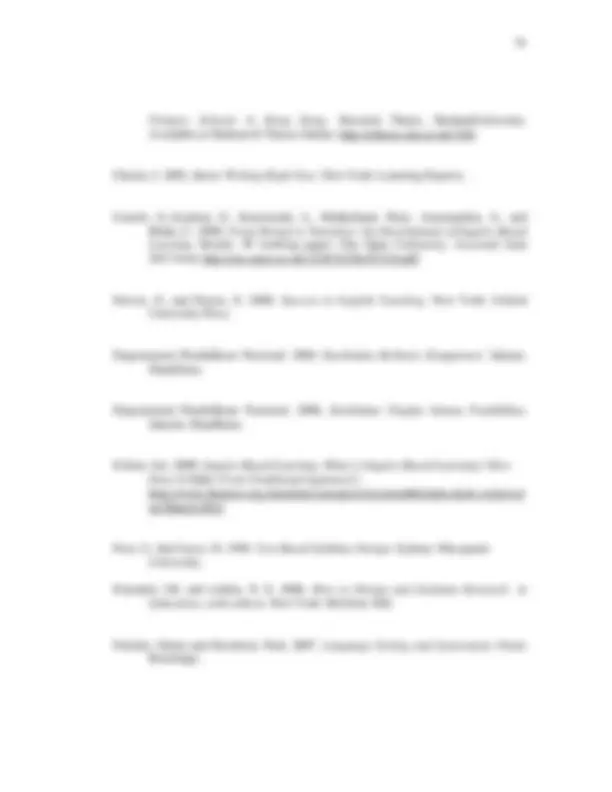
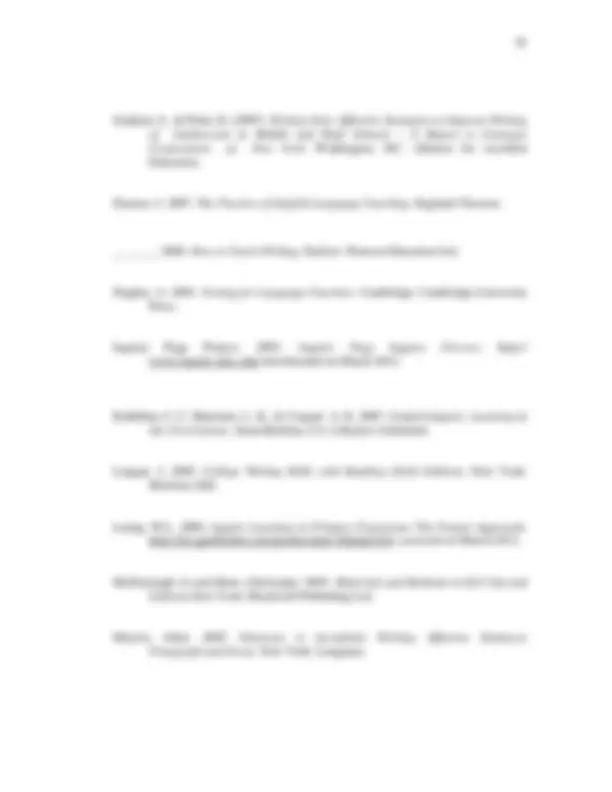
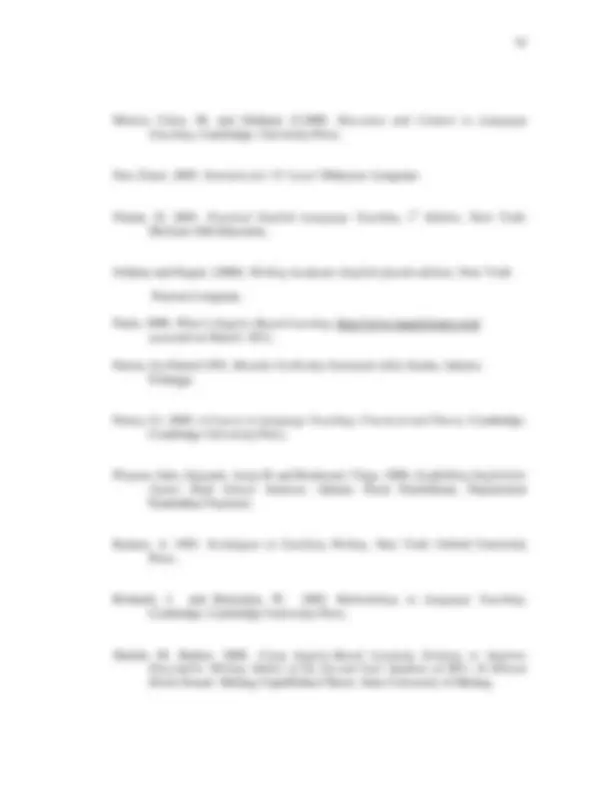
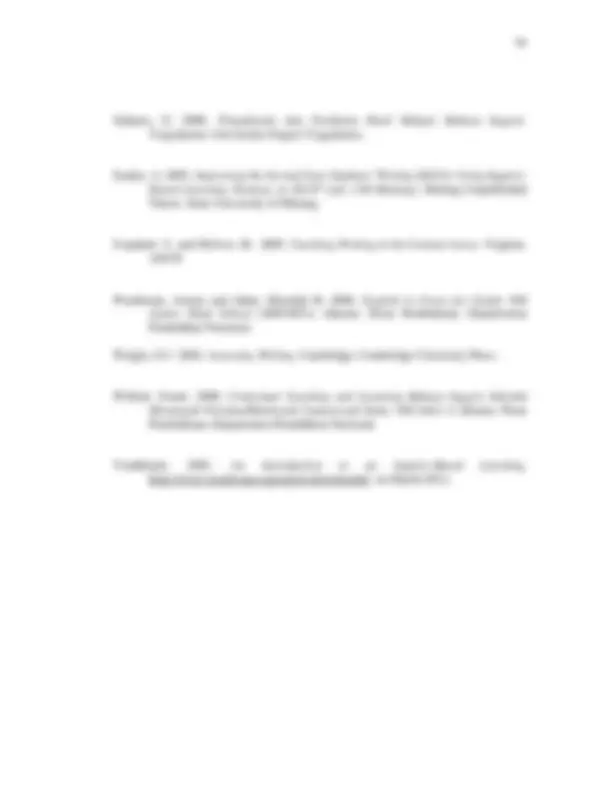


Study with the several resources on Docsity

Earn points by helping other students or get them with a premium plan


Prepare for your exams
Study with the several resources on Docsity

Earn points to download
Earn points by helping other students or get them with a premium plan
Community
Ask the community for help and clear up your study doubts
Discover the best universities in your country according to Docsity users
Free resources
Download our free guides on studying techniques, anxiety management strategies, and thesis advice from Docsity tutors
THE EFFECT OF USING INQUIRY-BASED LEARNING. STRATEGY IN THE WRITING ABILITY OF THE EIGHTH. GRADE STUDENTS OF SMP NEGERI 1 PRAMBANAN.
Typology: Study Guides, Projects, Research
1 / 247

This page cannot be seen from the preview
Don't miss anything!





























































































v
vii
ACKNOWLEDGEMENTS
First of all, I would like to praise Allah SWT for the blessing and mercy given to me during my study so that finally I can finish this final project. I really realize that this thesis project is finished with help of many people around me. Therefore, in this opportunity I would like to thank people who have given their ideas, times, and everything to me during the writing of this thesis. They are:
d. The Development of Inquiry-Based Learning Model .................................................................................... 31
- a. The Objective of Teaching writing............................ - b. Effective Techniques for Teaching Writing.............. - c. The Role of the Teacher............................................ - d. Teaching Writing in Junior High School................... - 3. Inquiry-Based Learning................................................... - a. Definition of Inquiry-Based Learning........................ - b. The Process of Inquiry-Based Learning..................... - c. Advantages of Inquiry-Based Leaning....................... - Junior High School.................................................... e. Using Inquiry to Teach Writing in - 4. Narrative Text.................................................................. - a. Definition of Narrative Text...................................... - b. Generic Structure of Narrative Text.......................... - c. Language Features..................................................... xi
a. The Data of the Pre-Test Scores of the Experimental Class…………………………….. 55 b. The Data of the Post-Test Score of the Experimental Class……………………….......... 56 c. Comparison between the Pre-Test and Post-Test of the Experimental Class......................................... 57
xiii
Table 17: Frequency Distribution of the Post-test Score on Students’ Writing Ability of the Control Class………………….... 60 Table 18: Statistical data of the Pre-test and Post-test of the Control Class..... 61 Table 19: The Normality Test of the Students’ Writing Test in the Pre-test and Post-test for both Experimental Class and Control Class…………. 63 Table 20: Result of the Homogeneity Test in Pre-test………………………... 65 Table 21: Result of the Homogeneity Test in Post-test……………………….. 65 Table 22: The Result of ANCOVA…………………………………………..... 66 Table 23: The Improvement of the Mean Score of Writing Tests of the Control and Experimental Classes…………………………….. 68 Table 24: Summary Means…………………………………………………... 69
xiv
Page Figure 1: A Cyclical Process in Inquiry-Based learning………………….... 28 Figure 2: The Freitag Triagle.......................................................................... 35 Figure 3: Students find some difficult words based on the text...................... 221 Figure 4: After finding the difficult words together the teacher and the students discussing the meaning of the words................................ 221 Figure 5: After finding some difficult words the students do the exercise based on the text.............................................................................. 222 Figure 6: Teacher and students involve in discussing, and she help the studentsif they get difficult........................................................ 222 Figure 7: Students do the exercise by discussing, sharing, and observing together........................................................................................... 223 Figure 8: Students write their ideas and try to write a narrative text............. 223 Figure 9: Students swap their drafts to other groups and asks them to give some comments and suggestion..................................................... 224 Figure 10: Students observing the learning material before doing the exercise.................................................................................... 224
xvi
By: Nurtalina NIM 07202244098
ABSTRACT The objective of this study is to find out whether there is a significant difference in terms of writing ability improvements between grade VIII students ofa method and those who are not in the academic year 2012/2013. SMP N 1 Prambanan Klaten who are taught inquiry-based learning strategy as This study involved 64 students from two groups, Class VIII D (32) as the experimental class and Class VIII E (32) as the control class. The experimental class used inquiry-based leaning strategy as teaching method in the teaching and learning process, whereas the control class was not taught by using the teachingmethod. The data were obtained by using an essay writing test. It was administered to the two classes as the pre-test and post-test. The pre-test was given to both classes before the treatment was given and the post-test was given after the treatment finished. The data of the pre-test and post-test of both groups were analyzed by means of descriptive and inferential statistics. After the datawere tested and found to be homogeneous and normal, the hypothesis was tested using the analysis of covariance (ANCOVA). The results of the data analysis are as follows. First, the mean value of the post-test in the experimental class (82.10) is higher than that in control class (66.09). Second, there is a significant difference in the writing ability between thestudents who were using inquiry-based learning strategy and those who were not. It can be seen in the result of the hypothesis testing using ANCOVA. The significant value of 0.00 is less than the significance level of 0.05 (0.00 < 0.05), which means that the data of this study are considered to have a significant difference. Therefore, the hypothesis of this study is accepted. It means thatinquiry-based learning strategy improve significantly the students’ writing ability in the English teaching and learning process in SMP N 1 Prambanan Klaten.
1
A. Background of the Problem In studying English there are four skills that must be learnt by foreign language students, they are listening, speaking, reading, and writing. The skills are the crucial elements in studying English, and among those skills, writing is considered the most difficult skill than others because writing is a merging process of ideas and opinions to be expressed in written language. Sometimes the learners feel difficult to write because they have to pay attention to every detail in their writing. Besides, in expressing ideas, the students will use assorted sentences such as compound sentence and complex sentence and they also will use assorted clauses. Therefore, writing is very complex like as mentioned by Richards and Renandya (2002:309) that written language is complex at the clause level. In order to improve the students’ writing ability in classroom, an English teacher has to choose the appropriate learning methods, right materials based on the students’ need, and suitable activities for the students. From those supporting factors involve choosing learning methods, choosing learning materials and choosing appropriate writing activities in classroom will make students enjoy to learn English especially writing. The students who love English will be easy to learn English writing so that they will be easy to express their ideas. It is almost the same with students who
3
feel difficult to arrange words into phrases and sentences. Secondly, students are lack in choosing an appropriate word in their paper whereas in understanding writing ability students have to use appropriate words in their writing. Thirdly, it is about the grammatical mistakes in writing. Students are expected to be able to write sentences with no grammatical errors but in fact grammatical errors are the main problems in their writing. Then, their writing is not comprehensible because the content of the composition is not relevant to the topic, the ideas are not clearly stated, the ideas and sentences are not well organized. Finally, students have to avoid “minimum requirement mistakes” in their writing, but they still make many mistakes in their writing such as: they forget to put full stop, comma, and capital letter in their sentences. This condition influences the students’ competence in their writing text because in writing, they need to apply and obey many rules order to produce communicative and effective composition. Ozbek (1995:53) states that learning to write well is a complex process involving many interconnected elements that are grammar, organization, vocabulary, spelling and punctuation. Those elements are significant in order to make the idea presented in that writing clear. According to Byrne (1988), writing is difficult for students. In writing, students are expected to write on their own, without any interaction or feedback. To help the students to be able to write, English teachers should give a kind of interaction or feedback for them. The teachers should be more creative to find out the appropriate techniques in teaching writing. There are
4
some effective techniques in teaching writing. One of them is by using inquiry activity. Graham and Perin (2007) state that inquiry activities engage the students in analyzing immediate, concrete data to help them develop ideas and content for a particular writing task. It is a kind of teaching technique that helps the students to develop their writing ability because the learners can observe immediately the object of learning. Considering those problems, it is important to improve the students’ writing ability especially in junior high school. Thus, this study tries to find out an alternative solution to improve the result of teaching writing.
B. Identification of the Problem There are three factors that influence the students’ writing ability. They are factors that related to the teacher, student and the process.
1. Problem related to the teacher It means that the problems which come from the teachers, the problems can be divided into three parts. They are method, material, and media which the teachers use when they teach in the classroom. a) Method In the class, teachers are promoters. They take control in classroom during the lesson until times up. Based on the observation at SMP N 1 Prambanan, the teacher did not use an interesting method in teaching in the class. She just explained the material in front of the class, after that she asked